|
|
Post by kaima on Apr 16, 2020 10:16:54 GMT -7
www.nytimes.com/interactive/2020/04/15/arts/dutch-war-diaries.html?campaign_id=9&emc=edit_NN_p_20200416&instance_id=17682&nl=morning-briefing®i_id=94799984§ion=longRead&segment_id=25289&te=1&user_id=aeedb5eab46ff7275a38df5b049bd0feThe Lost Diaries of War
By Nina Siegal and Josephine SedgwickApril 15, 2020
Volunteers are helping forgotten Dutch diarists of WWII to speak at last. Their voices, filled with anxiety, isolation and uncertainty, resonate powerfully today.[/font]  Anne Frank listened in an Amsterdam attic on March 28, 1944, as the voice of the Dutch minister of education came crackling over the radio from London. “Preserve your diaries and letters,” he said. Frank was not the only one listening. Thousands of Dutch people had been recording their experiences under German occupation since the Nazi invasion four years earlier. So the words of the minister, part of a government trying to operate from exile in England, resonated. “Only if we succeed in bringing this simple, daily material together in overwhelming quantity, only then will the scene of this struggle for freedom be painted in full depth and shine,” the minister, Gerrit Bolkestein, said. Frank responded by setting aside “Kitty,” the diary she had created as a personal refuge, and beginning a revised version called “The Secret Annex,” which she hoped to publish. Other diarists persevered too, and after the country was liberated in May 1945, they showed up at the National Office for the History of the Netherlands in Wartime, with their notebooks and letters in hand. More than 2,000 diaries were collected, each a story of pain and loss, fear and hunger and, yes, moments of levity amid the misery.  But unlike Frank’s diary, most of these accounts never surfaced again. Scholars read them once to inventory them, then shelved them — powerful but mute witnesses to the horrors of war. Now, though, the Dutch have launched an effort to transcribe the handwritten or typed pages into digital documents, ready for posting on the archive’s website. More than 90 have already been fully transcribed. “The most valuable diaries are the ones where they wrote about their own feelings, or conversations they had on the street or with family, or how they felt about the persecution of the Jews,” said Rene Kok, a researcher with the Dutch archive, now known as NIOD Institute for War, Holocaust and Genocide Studies. “The best diarists are the ones with courage.” Here are edited excerpts from several diaries that track the course of the war, beginning with the Nazi attack. Many people began their diaries that day, long before the radio address, as they worked to chronicle their lives in the most personal of terms. Their words, filled with the anxiety born of illness, isolation and uncertainty, register with particular power today in another unsettled time.  Elisabeth Jacoba van Lohuizen-van Wielink writes of the Nazi attack that began in the early morning of May 10, 1940, as German Luftwaffe paratroopers jumped from planes over selected targets across the country. Four days later, Rotterdam’s center was bombed to the ground, killing 800 people. The Dutch royal family fled for England. The Dutch Army capitulated on May 15. Van Lohuizen-van Wielink, 49, began her diary immediately and ultimately wrote 941 pages. She was the wife of a pharmacist and optician, who owned a grocery store in Epe, near Apeldoorn. May 10, 1940 Last night the roar of aircraft kept waking us up. First at around two o’clock, later at around four. The second time, I got up to take a look, but couldn’t see anything. I thought they might be German or English planes, heading for their enemies. I tried to sleep again. Though the noise never stopped, I was suddenly woken up by shouting. www.nytimes.com/interactive/2020/04/15/arts/dutch-war-diaries.html?campaign_id=9&emc=edit_NN_p_20200416&instance_id=17682&nl=morning-briefing®i_id=94799984§ion=longRead&segment_id=25289&te=1&user_id=aeedb5eab46ff7275a38df5b049bd0feMuch more at the link, I believe. It is a busy day and I must run. Kai
|
|
|
|
Post by kaima on Apr 17, 2020 11:59:26 GMT -7
 A woman on her roof in The Hague captured this image of German paratroopers filling the sky on the first day of the invasion. A woman on her roof in The Hague captured this image of German paratroopers filling the sky on the first day of the invasion.At first, I thought it was the people working at the house next door, but then I heard Mies van Lohuizen suddenly say, ‘They can’t hear anything, I got up and heard, War! Can’t you hear those airplanes?’ I found it hard to believe, but woke up Cees, who immediately turned on the radio, and then we heard several messages from the air force. A moment I’ll never forget. I’d always assumed they would leave us alone. We had been neutral until the end, and good to the Germans. We heard shouting, too. For a minute, we felt like we were paralyzed, and my first thought was, poor soldiers, there will be bloodshed. After we got dressed, we quickly packed what needed to go or be destroyed. Such as the alcohol, which definitely had to be taken. Most of it was sent a few weeks ago. The workmen, who were at home, were also asked to come. They were equally upset. War. We couldn’t believe it. Everything in nature was so beautiful, and that day in particular was sunny and bright.  The May 10, 1940, entry in the diary of Elisabeth Jacoba van Lohuizen-van Wielink, in which she gives her account of the German invasion. The May 10, 1940, entry in the diary of Elisabeth Jacoba van Lohuizen-van Wielink, in which she gives her account of the German invasion.May 14, 1940 At 7 o’clock, suddenly an extra message on the radio, a moment I’ll never forget. The commander in chief had decided to cease all hostilities. Rotterdam was as good as destroyed by the bombardments; if they didn’t cease fighting, The Hague, Amsterdam, and Utrecht would meet the same fate. I was so overwhelmed, I wept. We weren’t free anymore, and this, if we understood correctly, as a result of betrayal by our own people. We couldn’t believe it, yet it was true. Everyone was glad no more people would be killed, but still. To become part of Germany, how awful! What will the future bring? Poverty for our country. A heavy ordeal for everyone and an uncertain future. www.nytimes.com/interactive/2020/04/15/arts/dutch-war-diaries.html?campaign_id=9&emc=edit_NN_p_20200416&instance_id=17682&nl=morning-briefing®i_id=94799984§ion=longRead&segment_id=25289&te=1&user_id=aeedb5eab46ff7275a38df5b049bd0feThe article continues and continues in detail at this link. Included are: Diary of a Red Cross nurse — Catharina Damen-Ogier’s diary... The writer, a woman from The Hague whose name was not disclosed by the archive because of privacy concerns, is among those Dutch who sympathized with the German effort. ... Diary of a 10-year-old girl — Leni Bijlsma ....
Jan Christiaan Marius Kruisinga’s diary features accounts of events in 1941, when the occupiers first began rounding up and deporting Jews. ... Mirjam Bolle of Amsterdam ... An arrest — Another diary with many illustrations, this one, written by Petronella Jacoba Margaretha Venema-van Nijnatten ... and that takes me down only half of the internet page displaying the article. |
|
|
|
Post by pieter on Apr 18, 2020 7:55:02 GMT -7
Dear Kaima,
This topic and this thread comes very close to me. When I see the images of the tragic May 1940 events I see my father, aunt, grandparents, uncles and aunts from Rotterdam. They saw these German Fallschirmjäger in the air above Rotterdam in their parachutes, they heard the fierce battle between the Germans and the Dutch Marines who defended the bridges of Rotterdam and were called the Black Devils by the Germans who had great respect for their opponents after the battle.
German Airborne troops Fallschirmjäger prepair their attack on the Netherlands in may 1940
You see the German Heinkel planes of the Luftwaffe with the Fallschirmjäger on board flying over the Netherlands and than you see the Fallschirmjäger paratroopers of the German Airborne brigade jumping out of their planes. On the ground they met fierce resistance and a lot of German planes were shot down. That is something the German Nazi propaganda doesn't show. A lot of German Fallschirmjäger died at these Moerdijk bridges and other Rotterdan bridges.
During World War II, the German army invaded the Netherlands on 10 May 1940. Adolf Hitler had hoped to conquer the country in just one day, but his forces met unexpectedly fierce resistance. The Dutch army was forced to capitulate on 15 May 1940, following the bombing of Rotterdam on 14 May and the threat of bombing of other Dutch cities. The heart of Rotterdam was almost completely destroyed by the Luftwaffe. Some 80,000 civilians were made homeless and 900 were killed; a relatively low number due to the fact that many had fled the city because of the warfare and bombing going on in Rotterdam since the start of the invasion three days earlier. The City Hall survived the bombing. Ossip Zadkine later attempted to capture the event with his statue De Verwoeste Stad ('The Destroyed City'). The statue stands near the Leuvehaven, not far from the Erasmusbrug in the centre of the city, on the north shore of the river Nieuwe Maas.
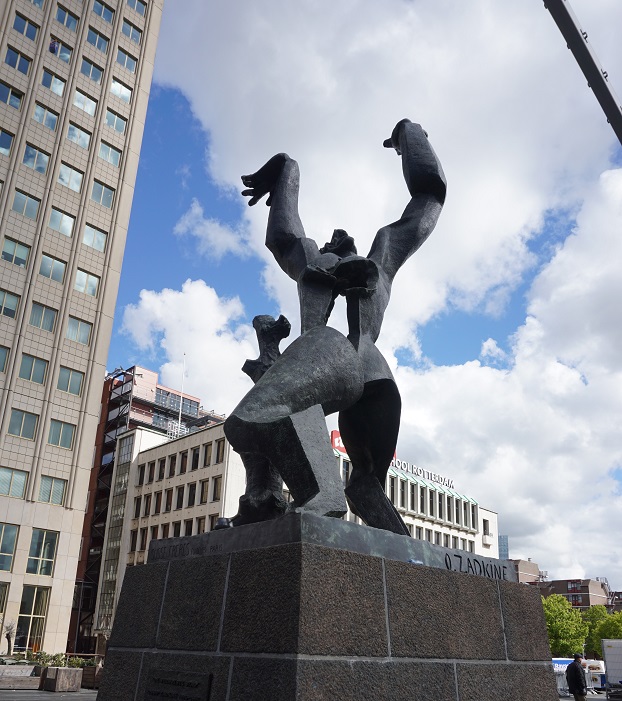 The Destroyed City by the Russian-born French naturalized artist Ossip Zadkine The Destroyed City by the Russian-born French naturalized artist Ossip Zadkine/s3/static.nrc.nl/wp-content/uploads/2018/02/web_0702binmariniers_24678139.jpg) Dutch marines in Rotterdam surrender to the Germans on May 14, 1940. The city was bombed earlier that day. They fought extremely fierce battles with the German Wehrmacht for days and were called 'the Black Devils" ("Die schwarzen Teufel"), because they were fanatic fighters.My father was in a hiding shelter in the cellar of the company building of the family firm under the building. His family survived the bombardment and their house in the upper- and middle class section of their neighbourhood was spared, but the working clash section of their neighbourhood was flattened with a lot of casualties amongst these working class families. Housewives, children, people on the street and etc. The complete working class section of Klarelingen, the neighbourhood was destroyed. The city center was flattened as well. After 5 days of fierce fighting the city Rotterdam as it had been for centuries and decades ceased to exist. The city was flattened and nothing was left of the historical city centre. The historical city centre was wiped out in 15 minutes by 97,000 kilo's of Luftwaffe bombs. Next to these bombardments there were also allied bombings of Rotterdam and other Dutch cities. For instance Nijmegen was hit hard by a mistaken American USAF air bombardment. The USAF thought that they bombed a German Industrial city, but they bombed Nijmegen. Dutch marines in Rotterdam surrender to the Germans on May 14, 1940. The city was bombed earlier that day. They fought extremely fierce battles with the German Wehrmacht for days and were called 'the Black Devils" ("Die schwarzen Teufel"), because they were fanatic fighters.My father was in a hiding shelter in the cellar of the company building of the family firm under the building. His family survived the bombardment and their house in the upper- and middle class section of their neighbourhood was spared, but the working clash section of their neighbourhood was flattened with a lot of casualties amongst these working class families. Housewives, children, people on the street and etc. The complete working class section of Klarelingen, the neighbourhood was destroyed. The city center was flattened as well. After 5 days of fierce fighting the city Rotterdam as it had been for centuries and decades ceased to exist. The city was flattened and nothing was left of the historical city centre. The historical city centre was wiped out in 15 minutes by 97,000 kilo's of Luftwaffe bombs. Next to these bombardments there were also allied bombings of Rotterdam and other Dutch cities. For instance Nijmegen was hit hard by a mistaken American USAF air bombardment. The USAF thought that they bombed a German Industrial city, but they bombed Nijmegen.
The bombing of Nijmegen on 22 February 1944 was an opportunistic aerial bombing raid by the United States Army Air Forces on the city of Nijmegen in the Netherlands, then occupied by Nazi Germany. In terms of the number of victims, it was one of the largest bombardments of a Dutch city during World War II. Officially, nearly 800 people (almost all civilians) were killed by accident due to inaccurate bombing but, because people in hiding could not be counted, the actual death toll was probably higher. A large part of the historic city centre was destroyed, including Saint Steven's Church. Saint Augustine's Church and Nijmegen railway station (the intended target) were heavily damaged as well.
Because the Dutch government-in-exile in London, which was able to reestablish itself on the continent in early 1945 thanks to the U.S. Army and other Allies' military efforts, tried to avoid criticism against the countries it was relying on for its liberation and future security, it and local authorities largely remained silent on the unfortunate event for decades, leaving survivors with unaddressed grief and questions, and allowing wild conspiracy theories to thrive. Although officials long maintained it had been an "erroneous bombardment", as if Nijmegen was the wrong target, historical research has shown that the attack was intentional, but had been executed poorly. ( en.wikipedia.org/wiki/Bombing_of_Nijmegen )During the rest of the war my father cycled to his highschool through the rubble until he went in hiding in 1944 because he was 16 and he had to go on Arbeitseinsatz to Germany. He prevented that by hiding in the attic of his parents home, while a Wehrmacht officer was quartered in the lower section of their house. These were scary times. My father, his parents and sister survived the war, the hunger winter (famine) of 1944/1945 and started a life after the war again.
The diaries come close to my Dutch existence Kaima, because I can read the Dutch texts on them. And they reflect life in Amsterdam, Rotterdam, the Hague, Utrecht, Arnhem and other cities and towns I have been too, people I have spoken too and the diaries of Anne Frank and Etty Hillesum I read in the original version, which probably makes it more direct and intens. Some things are hard to translate. Language has subtle things, some words and proverbs and expressions that are really typical, some language is intimate, and has some layers, intimate connotations and can only be said in Dutch. But there are of course excellent translations, like I read with great pleasure and like an addicted literary junkie the works of Fyodor Dostoyevsky and Nikolai Gogol in the Dutch translation. But I found out that the German originals of Franz Kafka's work were better than the Dutch translations. But I have great respect for the translators. But things you can't translate from German, Russian, Polish or Dutch. Language has a special atmosphere, space and meaning. Dutch is different than German, English, Polish, Russian, Yiddish, Hebrew, French, Arab, Turkish or the Slovak, Ukrainian, Baltic or Hungarian languages. I can compare the Germanic languages and see the large and smaller differences in that. As soon as I cross the border to Germany the atmosphere is different, not only due to different infrastructure, different houses (architecture), different nature and different culture, but also due to the German language. It is different. The Dutch language has some cosyness, intimate layers (the gezelligheids culture, hygge in Danish and Gemütlichkeit) that for instance English lacks or French. ( en.wikipedia.org/wiki/Gezelligheid ) You can't translated that gezelligheid, or the intimate and very personal things these Dutch jews and non-jewish Dutch citizens wrote down in their diaries during the war.
Anne Frank's and Etty Hillesums writings were one of the most profound and intens writings I read, next to the work of other great writers, spiritual people, theologians and novellists. Anne Frank would have been a great writer and she was aware of that herself.
Anne Frank's diary
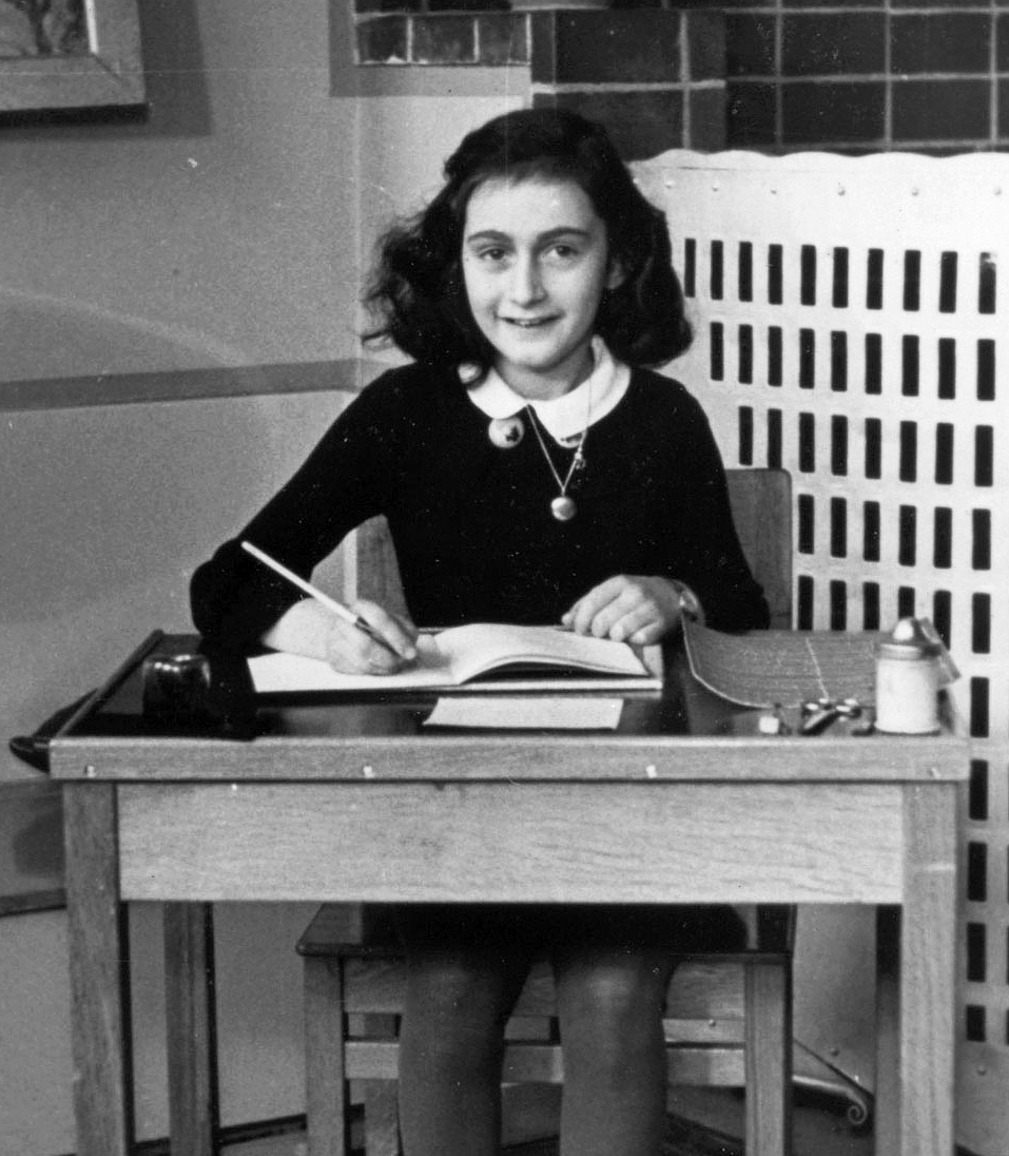
The diary has been praised for its literary merits. Commenting on Anne Frank's writing style, the dramatist Meyer Levin commended Frank for "sustaining the tension of a well-constructed novel", and was so impressed by the quality of her work that he collaborated with Otto Frank on a dramatization of the diary shortly after its publication. Levin became obsessed with Anne Frank, which he wrote about in his autobiography The Obsession. The poet John Berryman called the book a unique depiction, not merely of adolescence but of the "conversion of a child into a person as it is happening in a precise, confident, economical style stunning in its honesty".
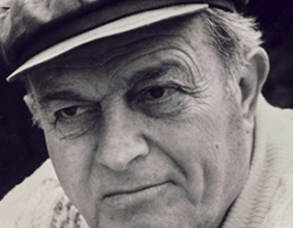
Meyer Levin (October 7, 1905 – July 9, 1981)
In her introduction to the diary's first American edition, Eleanor Roosevelt described it as "one of the wisest and most moving commentaries on war and its impact on human beings that I have ever read." John F. Kennedy discussed Anne Frank in a 1961 speech, and said, "Of all the multitudes who throughout history have spoken for human dignity in times of great suffering and loss, no voice is more compelling than that of Anne Frank." In the same year, the Soviet writer Ilya Ehrenburg wrote of her: "one voice speaks for six million—the voice not of a sage or a poet but of an ordinary little girl."

Eleanor Roosevelt described Anne Frank's diary as one of the wisest and most moving commentaries on war and its impact on human beings that she have ever read
As Anne Frank's stature as both a writer and humanist has grown, she has been discussed specifically as a symbol of the Holocaust and more broadly as a representative of persecution. Hillary Clinton, in her acceptance speech for an Elie Wiesel Humanitarian Award in 1994, read from Anne Frank's diary and spoke of her "awakening us to the folly of indifference and the terrible toll it takes on our young," which Clinton related to contemporary events in Sarajevo, Somalia and Rwanda. After receiving a humanitarian award from the Anne Frank Foundation in 1994, Nelson Mandela addressed a crowd in Johannesburg, saying he had read Anne Frank's diary while in prison and "derived much encouragement from it." He likened her struggle against Nazism to his struggle against apartheid, drawing a parallel between the two philosophies: "Because these beliefs are patently false, and because they were, and will always be, challenged by the likes of Anne Frank, they are bound to fail." Also in 1994, Václav Havel said "Anne Frank's legacy is very much alive and it can address us fully" in relation to the political and social changes occurring at the time in former Eastern Bloc countries.
Primo Levi suggested Anne Frank is frequently identified as a single representative of the millions of people who suffered and died as she did because "One single Anne Frank moves us more than the countless others who suffered just as she did but whose faces have remained in the shadows. Perhaps it is better that way; if we were capable of taking in all the suffering of all those people, we would not be able to live." In her closing message in Müller's biography of Anne Frank, Miep Gies expressed a similar thought, though she attempted to dispel what she felt was a growing misconception that "Anne symbolises the six million victims of the Holocaust", writing: "Anne's life and death were her own individual fate, an individual fate that happened six million times over. Anne cannot, and should not, stand for the many individuals whom the Nazis robbed of their lives ... But her fate helps us grasp the immense loss the world suffered because of the Holocaust."All these diaries of men, women and children are important war documents, they tell the stories of the daily lives of these Dutch people back then under the German and Austrian Nazi occupation. I say it as it is because the most notorious, vicious and influential and powerful nazi leaders in the Netherlands weren't Germans, but Austrians. Yes, you had good, bad and inbetween, average, indifferent and neutral compatriots between the Dutch resistance and the Dutch traitors of the NSB ( en.wikipedia.org/wiki/National_Socialist_Movement_in_the_Netherlands ), Dutch Waffen SS and Dutch SD, Gestapo and collaborationalist police members. I have to say that there were also good police officers and even members of the resistance amongst them who warned jews, resistance fighters and allied pilots who were in hiding after being shot down that there would be raids on their hiding places by the Dutch police, the Ordungspolizei (called the Grüne Polizei in the Netherlands), the Gestapo, SD (Sicherheitsdienst) or the SIPO (Sicherheitspolizei), or Dutch jew hunters who received 7 guilder per jew they could catch and deliver or betray to the Gestapo or SD. 18 January 1943: Reich Commissioner Arthur Seyss-Inquart shakes hands with Oberfeldwebel Friedrich Wimmer. Leader of the II./Infanterie-Regiment 120 (motorized). He was Awarded 179th Oak Leaves on 18 January 1943. Next to him is Hanns Albin Rauter, the highest SS and Police Leader in the occupied Netherlands and therefore the leading security and police officer there during the period of 1940–1945. 18 January 1943: Reich Commissioner Arthur Seyss-Inquart shakes hands with Oberfeldwebel Friedrich Wimmer. Leader of the II./Infanterie-Regiment 120 (motorized). He was Awarded 179th Oak Leaves on 18 January 1943. Next to him is Hanns Albin Rauter, the highest SS and Police Leader in the occupied Netherlands and therefore the leading security and police officer there during the period of 1940–1945.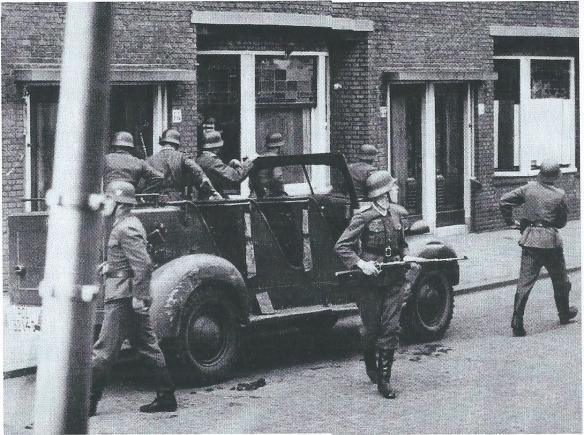 Razzia Grüne Polizei in Rotterdam in the Netherlands during the Nazi occupation (1940-1945) Razzia Grüne Polizei in Rotterdam in the Netherlands during the Nazi occupation (1940-1945) February 1941. Grune Polizei checkpoint at the Blauwbrug in Amsterdam. The Blauwbrug was an entry point into the Jewish section of the city. February 1941. Grune Polizei checkpoint at the Blauwbrug in Amsterdam. The Blauwbrug was an entry point into the Jewish section of the city.  February 1941 - 61 years ago. Parade of Ordnungspolizei, also called Grüne Polizei, at the Dam square in Amsterdan after a speech of Seyss-Inquart. February 1941 - 61 years ago. Parade of Ordnungspolizei, also called Grüne Polizei, at the Dam square in Amsterdan after a speech of Seyss-Inquart. 1941. An inspection carried out by a unit of the Ordnungspolizei, also known as the Grüne Polizei, who were quartered at the Valerius Lyceum in Amsterdam. Many schools in Amsterdam were wholly or partly requisitioned by the German occupying forces. In this Lyceum lessons carry on as normal. #amsterdam #worldwar2 1941. An inspection carried out by a unit of the Ordnungspolizei, also known as the Grüne Polizei, who were quartered at the Valerius Lyceum in Amsterdam. Many schools in Amsterdam were wholly or partly requisitioned by the German occupying forces. In this Lyceum lessons carry on as normal. #amsterdam #worldwar2 1941. The Ordnungspolizei (Grüne Polizei) marches through the city of Amsterdam near the Leidsebosje on The Day of the German Police. On the right the Hirsch building at the Leidseplein. Photo ANP Photo / J. D. Noske. 1941. The Ordnungspolizei (Grüne Polizei) marches through the city of Amsterdam near the Leidsebosje on The Day of the German Police. On the right the Hirsch building at the Leidseplein. Photo ANP Photo / J. D. Noske. The german "Gruene Polizei" marching along the Herengracht in Amsterdam around 1941 The german "Gruene Polizei" marching along the Herengracht in Amsterdam around 1941 1941. A parade of the Ordenungpolizei (Grüne Polizei) on Damrak in Amsterdam. The Grüne Polizei or Ordungspolizei were German police units stationed in the Netherlands. Their main task was the crackdown on unrest, strikes, and demonstrations, and acting as fire platoons. Photo Stadsarchief Amsterdam / Bart Kok. 1941. A parade of the Ordenungpolizei (Grüne Polizei) on Damrak in Amsterdam. The Grüne Polizei or Ordungspolizei were German police units stationed in the Netherlands. Their main task was the crackdown on unrest, strikes, and demonstrations, and acting as fire platoons. Photo Stadsarchief Amsterdam / Bart Kok.  German parade during a speech in Amsterdam of the Reichskommissar of the occupied Netherlands Arthur Seyss-Inquart German parade during a speech in Amsterdam of the Reichskommissar of the occupied Netherlands Arthur Seyss-Inquart February 1941. Ordnungspolizei (Grüne Polizei) and members of the WA (Weerbaarheids Afdeling of the NSB) gather in front of café-cabaret Alcazar at the Thorbeckeplein in Amsterdam after they attacked the establishment. Alcazar was attacked because they allowed Jewish artists to perform. Starting September 15, 1941 Jews were not allowed to visit and perform at café’s and restaurants. Photo Stadsarchief Amsterdam / Bart de Kok. February 1941. Ordnungspolizei (Grüne Polizei) and members of the WA (Weerbaarheids Afdeling of the NSB) gather in front of café-cabaret Alcazar at the Thorbeckeplein in Amsterdam after they attacked the establishment. Alcazar was attacked because they allowed Jewish artists to perform. Starting September 15, 1941 Jews were not allowed to visit and perform at café’s and restaurants. Photo Stadsarchief Amsterdam / Bart de Kok. The furniture from houses abandoned by Jews in Amsterdam was usually removed by the moving company of NSB member Abraham Puls: an activity that was popularly called "pulses". Hitler had determined that leftover household goods from deported Jews would benefit residents of German cities plagued by Allied air forces. The furniture from houses abandoned by Jews in Amsterdam was usually removed by the moving company of NSB member Abraham Puls: an activity that was popularly called "pulses". Hitler had determined that leftover household goods from deported Jews would benefit residents of German cities plagued by Allied air forces. July 1942. Detention of a Jewish stamp dealer at the stamp market on the Nieuwezijds Voorburgwal by a Dutch officer of the Sicherheitsdienst. The Sicherheitsdienst was an intelligence agency staffed primarily by Dutch nazi-sympathizers. Photo Stadsarchief Amsterdam / Bart de Kok. July 1942. Detention of a Jewish stamp dealer at the stamp market on the Nieuwezijds Voorburgwal by a Dutch officer of the Sicherheitsdienst. The Sicherheitsdienst was an intelligence agency staffed primarily by Dutch nazi-sympathizers. Photo Stadsarchief Amsterdam / Bart de Kok.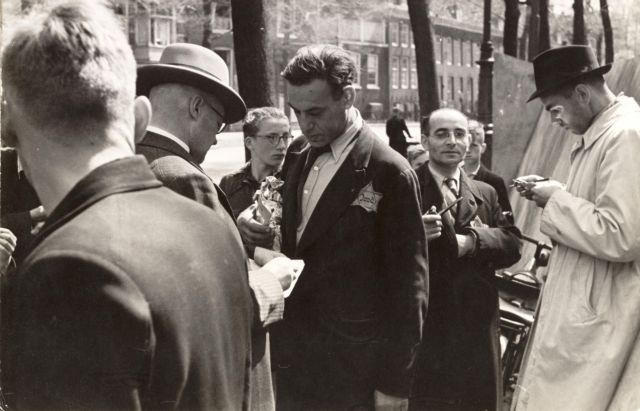 Dutch collaborators of the Sicherheitsdienst check the identity cards of Jewish vendors Dutch collaborators of the Sicherheitsdienst check the identity cards of Jewish vendors 1941. A commander of the Ordnungspolizei congratulates, on the occasion of Hitler’s birthday, the to guard masters promoted members of Die Ordnungspolizei (D.O.P.). Photo BeeldbankWO2/NIOD/Nationaal Oorlogs- en Verzetsmuseum Overloon. 1941. A commander of the Ordnungspolizei congratulates, on the occasion of Hitler’s birthday, the to guard masters promoted members of Die Ordnungspolizei (D.O.P.). Photo BeeldbankWO2/NIOD/Nationaal Oorlogs- en Verzetsmuseum Overloon. July 1940. Concert of the Ordungspolizei (Grüne Polizei) band at Dam square in Amsterdam. Photo BBWO2 / NIOD, Stapf Bilderdienst. #1940 July 1940. Concert of the Ordungspolizei (Grüne Polizei) band at Dam square in Amsterdam. Photo BBWO2 / NIOD, Stapf Bilderdienst. #1940 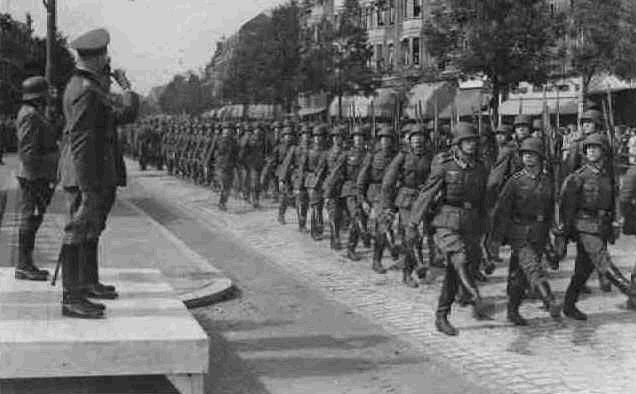 Rotterdam, Wehrmacht march of the occupational German and Austrian forces Rotterdam, Wehrmacht march of the occupational German and Austrian forces 1941. German soldiers on Dam Square in Amsterdam. 1941. German soldiers on Dam Square in Amsterdam.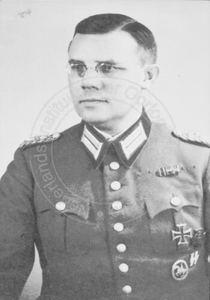 Dr. Heinrich Bernhard Lankenau, in 1943 Befehlshaber der Ordnungspolizei. Spring to late 1943 in the Netherlands. Dr. Heinrich Bernhard Lankenau, in 1943 Befehlshaber der Ordnungspolizei. Spring to late 1943 in the Netherlands. NSB members chase a man with a bicycle at St. Jacobsstraat in Utrecht. In the background the Jacobi Church - Photo: Bart de Kok / City Archives (cowards) NSB members chase a man with a bicycle at St. Jacobsstraat in Utrecht. In the background the Jacobi Church - Photo: Bart de Kok / City Archives (cowards) Ingeborg Kahlenberg with hidden camera in bag (reconstructed image ... after the war), members of the resistance took photos in an unobtrusive way. It is important to show the world how it was in the occupied Netherlands. Amsterdam (late May 1945) Creator: photographer: Charles Breijer Ingeborg Kahlenberg with hidden camera in bag (reconstructed image ... after the war), members of the resistance took photos in an unobtrusive way. It is important to show the world how it was in the occupied Netherlands. Amsterdam (late May 1945) Creator: photographer: Charles Breijer 1941. The Ordnungspolizei (Grüne Polizei) marches at the Munt in Amsterdam. The Grüne Polizei were German police units stationed in the Netherlands. Their main task was to crack down on unrest, strikes and demonstrations. During the occupation 3 to 6 battalions of 550 man served in the Netherlands with a total strength of approximately 3000 men. #amsterdam #1941 #worldwar2 #Munt #Ordnungspolizei 1941. The Ordnungspolizei (Grüne Polizei) marches at the Munt in Amsterdam. The Grüne Polizei were German police units stationed in the Netherlands. Their main task was to crack down on unrest, strikes and demonstrations. During the occupation 3 to 6 battalions of 550 man served in the Netherlands with a total strength of approximately 3000 men. #amsterdam #1941 #worldwar2 #Munt #Ordnungspolizei Willy Paul Franz Lages (October 5, 1901 – April 2, 1971) was the German chief of the Sicherheitsdienst in Amsterdam during the Second World War. From March 1941 he led the so-called Zentralstelle für jüdische Auswanderung (Central Bureau for the Jewish Emigration). As such he was responsible for the deportation of Dutch Jews to the concentration camps in Germany and occupied Poland. Willy Paul Franz Lages (October 5, 1901 – April 2, 1971) was the German chief of the Sicherheitsdienst in Amsterdam during the Second World War. From March 1941 he led the so-called Zentralstelle für jüdische Auswanderung (Central Bureau for the Jewish Emigration). As such he was responsible for the deportation of Dutch Jews to the concentration camps in Germany and occupied Poland. Ferdinand Hugo aus der Fünten (17 December 1909 – 19 April 1989), widely known as Fünten, was an SS-Hauptsturmführer and head of the Central Office for Jewish Emigration in Amsterdam during the Second World War. He was responsible for the deportation of Jews from the Netherlands to the German concentration camps and was convicted as a war criminal. Ferdinand Hugo aus der Fünten (17 December 1909 – 19 April 1989), widely known as Fünten, was an SS-Hauptsturmführer and head of the Central Office for Jewish Emigration in Amsterdam during the Second World War. He was responsible for the deportation of Jews from the Netherlands to the German concentration camps and was convicted as a war criminal. SS-Oberscharführer of the Sicherheitsdienst Joseph Johann (Jupp) Kotalla (born July 14, 1908 in Bismarckhütte, † July 31, 1979 in Breda) was head of administration at Kamp Amersfoort during World War II. In September 1942, he was appointed by Karl Peter Berg as protective custody leader II in Amersfoort. Kotalla was instrumental in the deportation of Dutch Jews. SS-Oberscharführer of the Sicherheitsdienst Joseph Johann (Jupp) Kotalla (born July 14, 1908 in Bismarckhütte, † July 31, 1979 in Breda) was head of administration at Kamp Amersfoort during World War II. In September 1942, he was appointed by Karl Peter Berg as protective custody leader II in Amersfoort. Kotalla was instrumental in the deportation of Dutch Jews. SS-Obersturmführer of the Sicherheitsdienst Albert Konrad Gemmeker (September 27, 1907 - August 30, 1982) was a convicted German war criminal, SS man and commander of Camp Westerbork in the Netherlands. SS-Obersturmführer of the Sicherheitsdienst Albert Konrad Gemmeker (September 27, 1907 - August 30, 1982) was a convicted German war criminal, SS man and commander of Camp Westerbork in the Netherlands. Razzia in de steenstraat (Stone street) in Arnhem, province of Gelderland (Mid east), the Netherlands Razzia in de steenstraat (Stone street) in Arnhem, province of Gelderland (Mid east), the Netherlands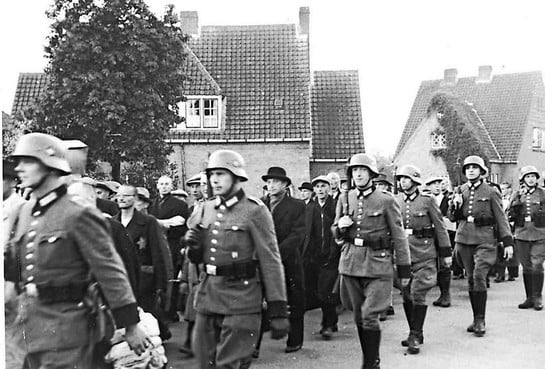 Prisoners are escorted to the camp Amersfoort under heavy surveillance through the city of Amersfoort. Prisoners are escorted to the camp Amersfoort under heavy surveillance through the city of Amersfoort. Razzia on jews in februari 1941 in Amsterdam Razzia on jews in februari 1941 in Amsterdam Razzia on jews in februari 1941 in Amsterdam Razzia on jews in februari 1941 in Amsterdam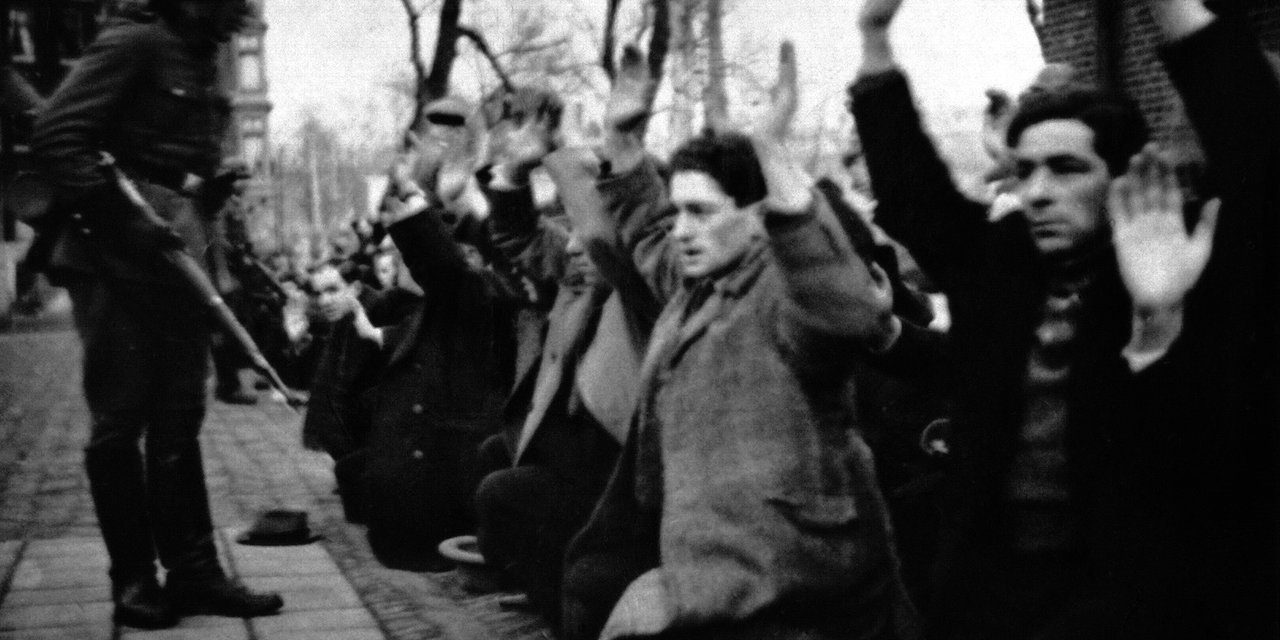 Razzia on jews in februari 1941 in Amsterdam Razzia on jews in februari 1941 in Amsterdam 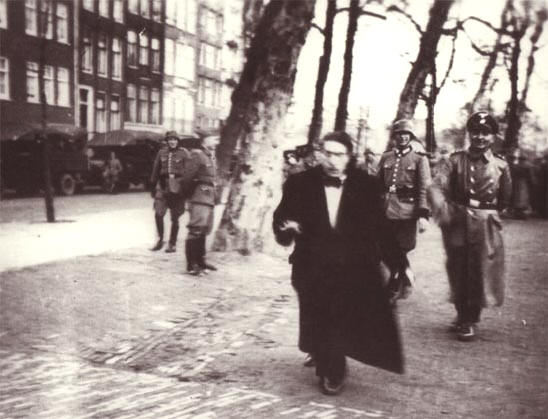 Razzia on jews in februari 1941 in Amsterdam. The contrast between the smiling Gestapo or SD men and the jewish man in mortall fear is striking, dramatic and extremely sad if you know that this man probably died in a Nazi concentration camp. Treblinka or Auschwitz-Birkenau. Razzia on jews in februari 1941 in Amsterdam. The contrast between the smiling Gestapo or SD men and the jewish man in mortall fear is striking, dramatic and extremely sad if you know that this man probably died in a Nazi concentration camp. Treblinka or Auschwitz-Birkenau.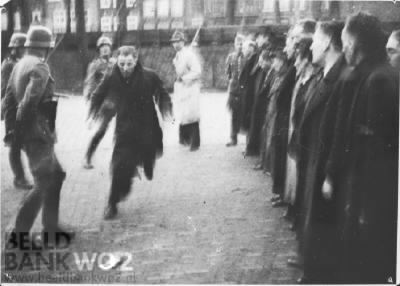 During the same razzia in februari 1941 During the same razzia in februari 1941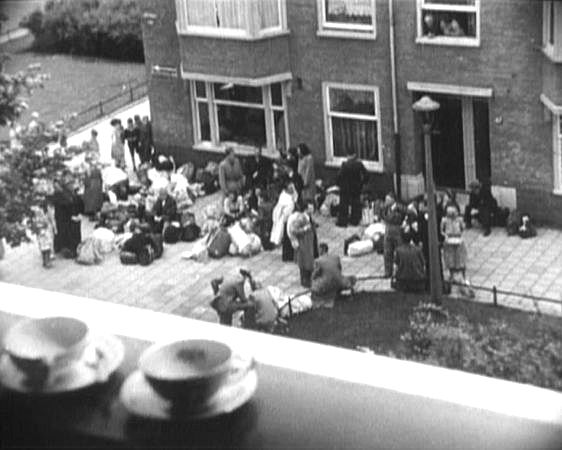 Gathered Amsterdam jews waiting for their deportation to the Westerbork concentration camp, from where they later would be transported to Auschwitz, Buchenwald, Mauthausen, Treblinka and other camps. Most of them never returned to the Netherlands. Gathered Amsterdam jews waiting for their deportation to the Westerbork concentration camp, from where they later would be transported to Auschwitz, Buchenwald, Mauthausen, Treblinka and other camps. Most of them never returned to the Netherlands. Rounded up Dutch jews boarded on a train in Amsterdam to transitcamp Westerbork in the North-East province of the Netherlands, Drenthe. Rounded up Dutch jews boarded on a train in Amsterdam to transitcamp Westerbork in the North-East province of the Netherlands, Drenthe.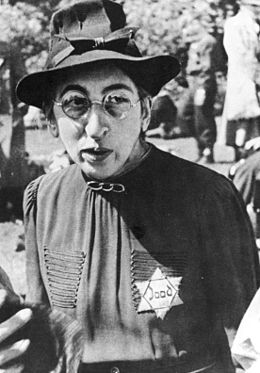 Woman with Star of David during the Great Raid in Amsterdam on June 20, 1943 Woman with Star of David during the Great Raid in Amsterdam on June 20, 1943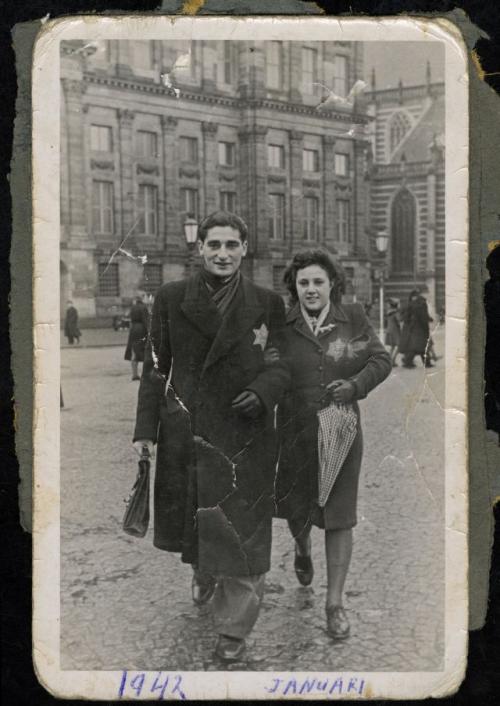 A Dutch jewish couple on the Dam square in Amsterdam. Januari 1942. There is a great chance that this couple didn't survived the war. A Dutch jewish couple on the Dam square in Amsterdam. Januari 1942. There is a great chance that this couple didn't survived the war. 1943. A group of Jews is dropped off at a barrack on the Panamakade in Amsterdam to be put on a train to transition camp Westerbork. SS officers, municipal police and members of the order service of the Jewish Council guide them to the train. 1943. A group of Jews is dropped off at a barrack on the Panamakade in Amsterdam to be put on a train to transition camp Westerbork. SS officers, municipal police and members of the order service of the Jewish Council guide them to the train. Dutch Jews board the train that is to take them to Auschwitz. Photograph from 1942 or 1943. Photographer: Rudolf Breslauer. Dutch Jews board the train that is to take them to Auschwitz. Photograph from 1942 or 1943. Photographer: Rudolf Breslauer.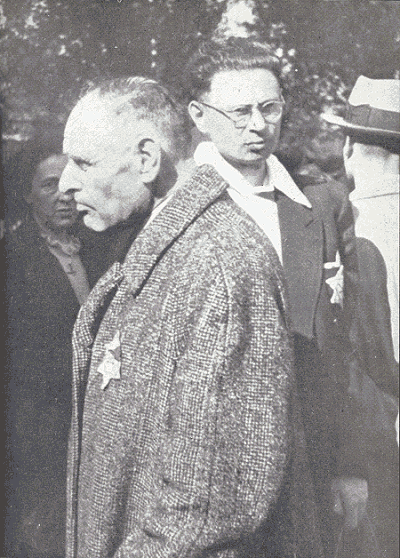 Rounded up jews wait for their deportation Rounded up jews wait for their deportation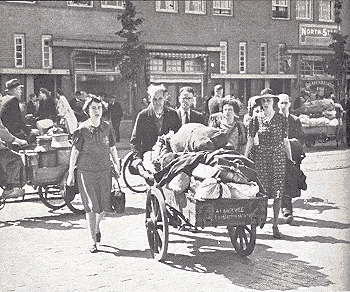 Rounded up jews with their belongings on a carrier cycle Rounded up jews with their belongings on a carrier cycle 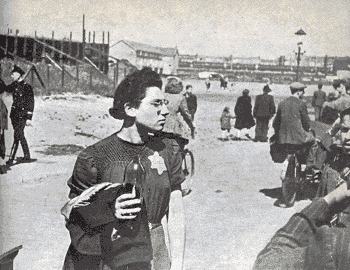 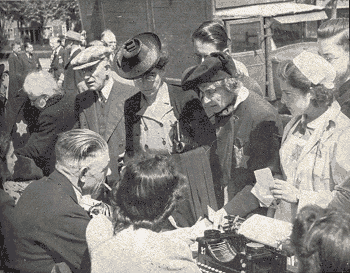 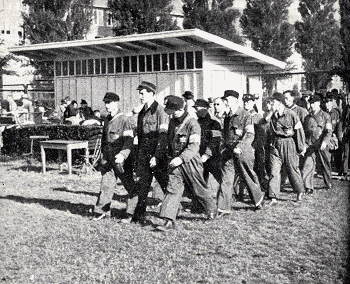 Men of the Jewish Order Service from Westerbork help with the transport Men of the Jewish Order Service from Westerbork help with the transport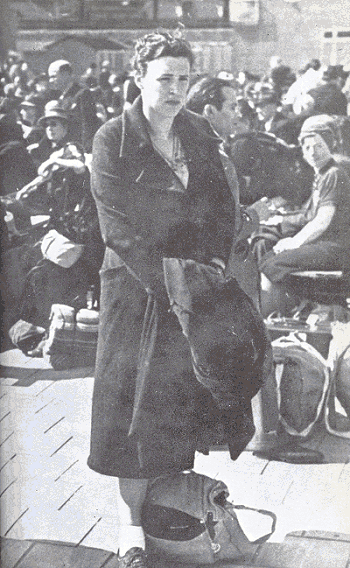 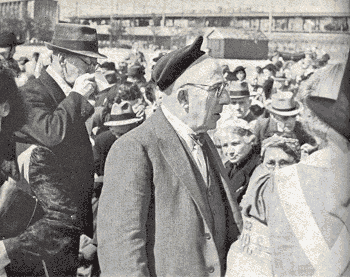 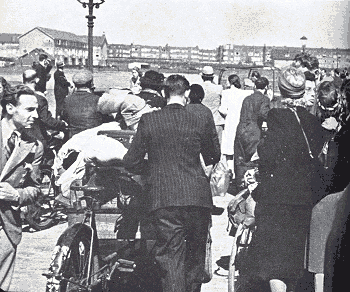 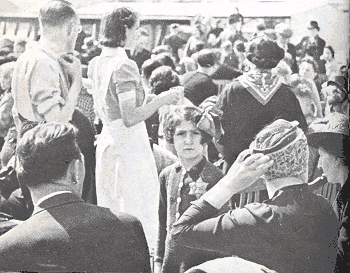 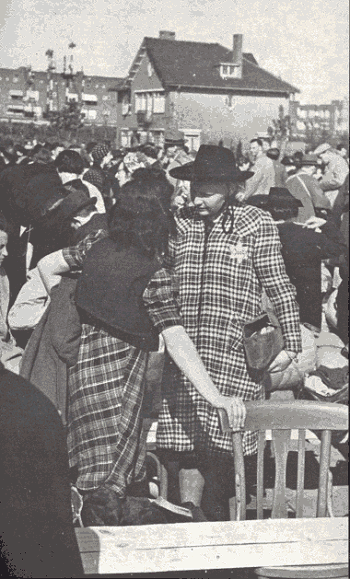 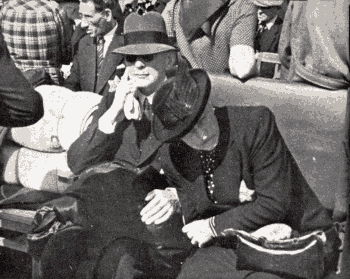 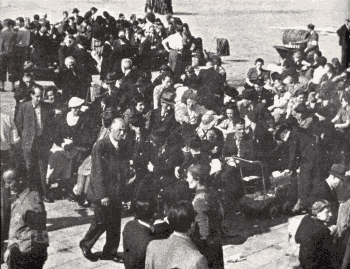 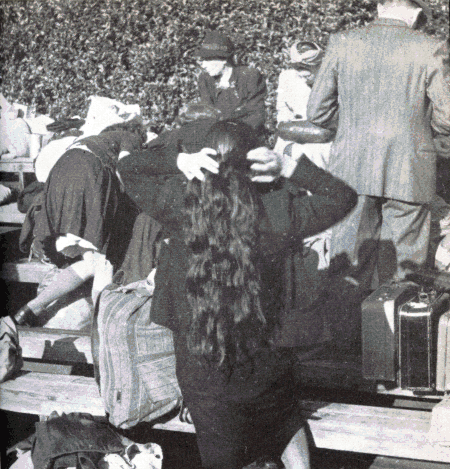 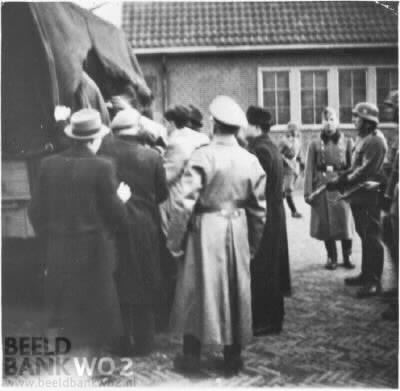 These arrested Jews were transported to Schoorl and then end up in Mauthausen via Buchenwald. These arrested Jews were transported to Schoorl and then end up in Mauthausen via Buchenwald. 1943. German army trucks lined up to transport Jews rounded up in Amsterdam to an assembly point from where they were deported to transition camp Westerbork. 1943. German army trucks lined up to transport Jews rounded up in Amsterdam to an assembly point from where they were deported to transition camp Westerbork. June 1943. Jewish families rounded up during major razzia’s in Amsterdam-Oost and Rivierenbuurt neighborhood are boarding a train at the Muiderpoortstation to transition camp Westerbork. After they spend some time at Westerbork Jews were deported to concentration camps Auschwitz-Birkenau, Bergen-Belsen, and Sobibor. Only 11,000 of the 80,000 Jews of Amsterdam survived the occupation. June 1943. Jewish families rounded up during major razzia’s in Amsterdam-Oost and Rivierenbuurt neighborhood are boarding a train at the Muiderpoortstation to transition camp Westerbork. After they spend some time at Westerbork Jews were deported to concentration camps Auschwitz-Birkenau, Bergen-Belsen, and Sobibor. Only 11,000 of the 80,000 Jews of Amsterdam survived the occupation. The Amsterdam Ghetto for rounded up jews. It was smaller than the Warsaw Ghetto, but it served the same purpose, and it was also administered by the Jewish Council (de Joodse raad) The Amsterdam Ghetto for rounded up jews. It was smaller than the Warsaw Ghetto, but it served the same purpose, and it was also administered by the Jewish Council (de Joodse raad) The Jewish quarter, the Jewish Ghetto of Amsterdam was an area of the city where Amsterdam jews and jews from neighbouring towns like Zaandam were concentrated. The Jewish quarter, the Jewish Ghetto of Amsterdam was an area of the city where Amsterdam jews and jews from neighbouring towns like Zaandam were concentrated.   The Jewish council of Amsterdam The Jewish council of Amsterdam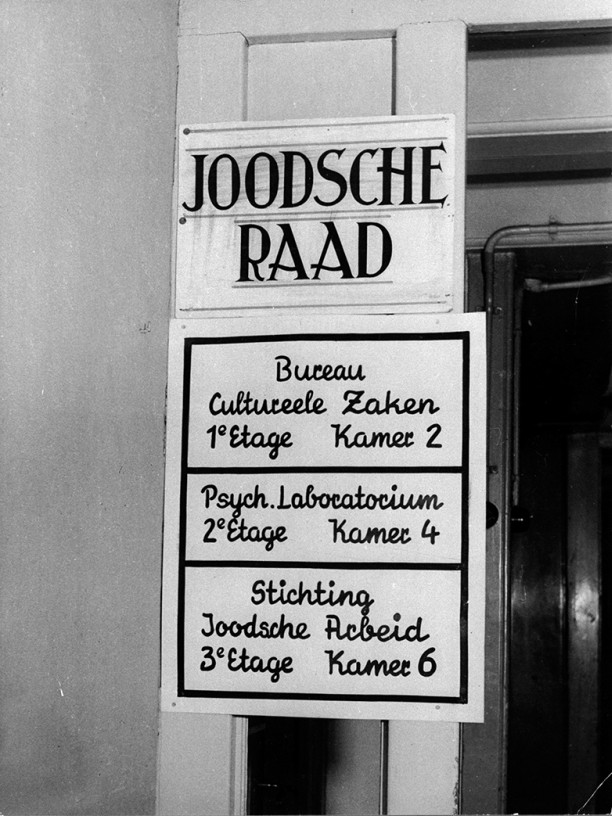  De Joodse raad (the Jewish council) in Amsterdam) De Joodse raad (the Jewish council) in Amsterdam) De Joodse raad (the Jewish council) in Amsterdam) De Joodse raad (the Jewish council) in Amsterdam)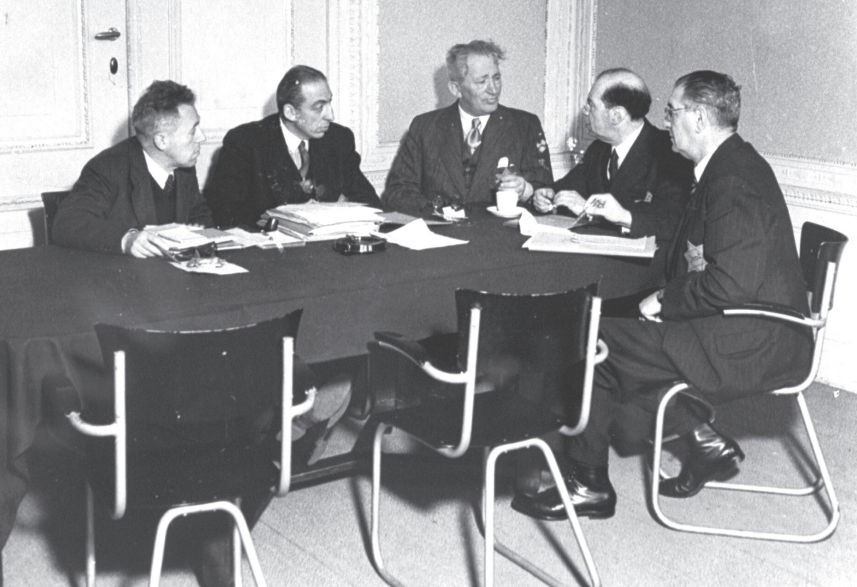 De Joodse raad (the Jewish council) in Amsterdam) De Joodse raad (the Jewish council) in Amsterdam) Workers sort and file papers and cards in the offices of the Joodse Raad in Amsterdam. Workers sort and file papers and cards in the offices of the Joodse Raad in Amsterdam. Dutch Jews work in the offices of the Joodse Raad (Jewish Council) in Amsterdam. Dutch Jews work in the offices of the Joodse Raad (Jewish Council) in Amsterdam.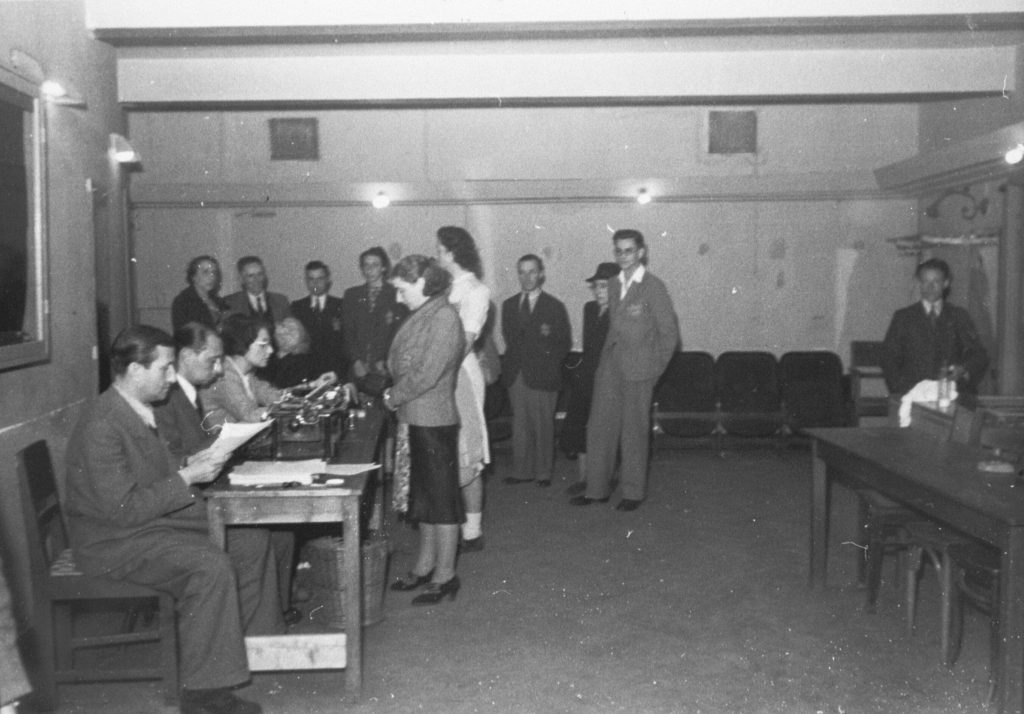 Rounded up jews are registered by members of the Joodse Raad in the Hollandse schouwburg (the Holland Theatre in Amsterdam). Originally, the Hollandsche Schouwburg was a Dutch theatre, but it was deemed as a Jewish theatre in 1941 by Nazi occupiers and it was later used as a deportation center during the Holocaust in the NetherlandsA Judenrat (Joodse raad/Jewish council)was a World War II administrative agency imposed by Nazi Germany on Jewish communities across occupied Europe, principally within the Nazi ghettos. The Germans required Jews to form a Judenrat in every community across the occupied territories. The Judenrat constituted a form of self-enforcing intermediary, used by the Nazi administration to control larger Jewish communities. Judenräte were responsible for the internal administration of ghettos, standing between the Nazi occupiers and their Jewish communities. In general, the Judenräte represented the elite from their Jewish communities. They also attempted to manage the government services normally found in a city, such as those named above. However, the Germans requiring them to deliver community members for forced labor or deportation to concentration camps, placed them in the position of cooperating with the German occupiers. To resist such orders was to risk summary execution, or quick replacement and inclusion in the next concentration-camp shipment. Rounded up jews are registered by members of the Joodse Raad in the Hollandse schouwburg (the Holland Theatre in Amsterdam). Originally, the Hollandsche Schouwburg was a Dutch theatre, but it was deemed as a Jewish theatre in 1941 by Nazi occupiers and it was later used as a deportation center during the Holocaust in the NetherlandsA Judenrat (Joodse raad/Jewish council)was a World War II administrative agency imposed by Nazi Germany on Jewish communities across occupied Europe, principally within the Nazi ghettos. The Germans required Jews to form a Judenrat in every community across the occupied territories. The Judenrat constituted a form of self-enforcing intermediary, used by the Nazi administration to control larger Jewish communities. Judenräte were responsible for the internal administration of ghettos, standing between the Nazi occupiers and their Jewish communities. In general, the Judenräte represented the elite from their Jewish communities. They also attempted to manage the government services normally found in a city, such as those named above. However, the Germans requiring them to deliver community members for forced labor or deportation to concentration camps, placed them in the position of cooperating with the German occupiers. To resist such orders was to risk summary execution, or quick replacement and inclusion in the next concentration-camp shipment.
|
|
|
|
Post by pieter on Apr 18, 2020 10:51:38 GMT -7
Hunger winter (famine) 1944-1945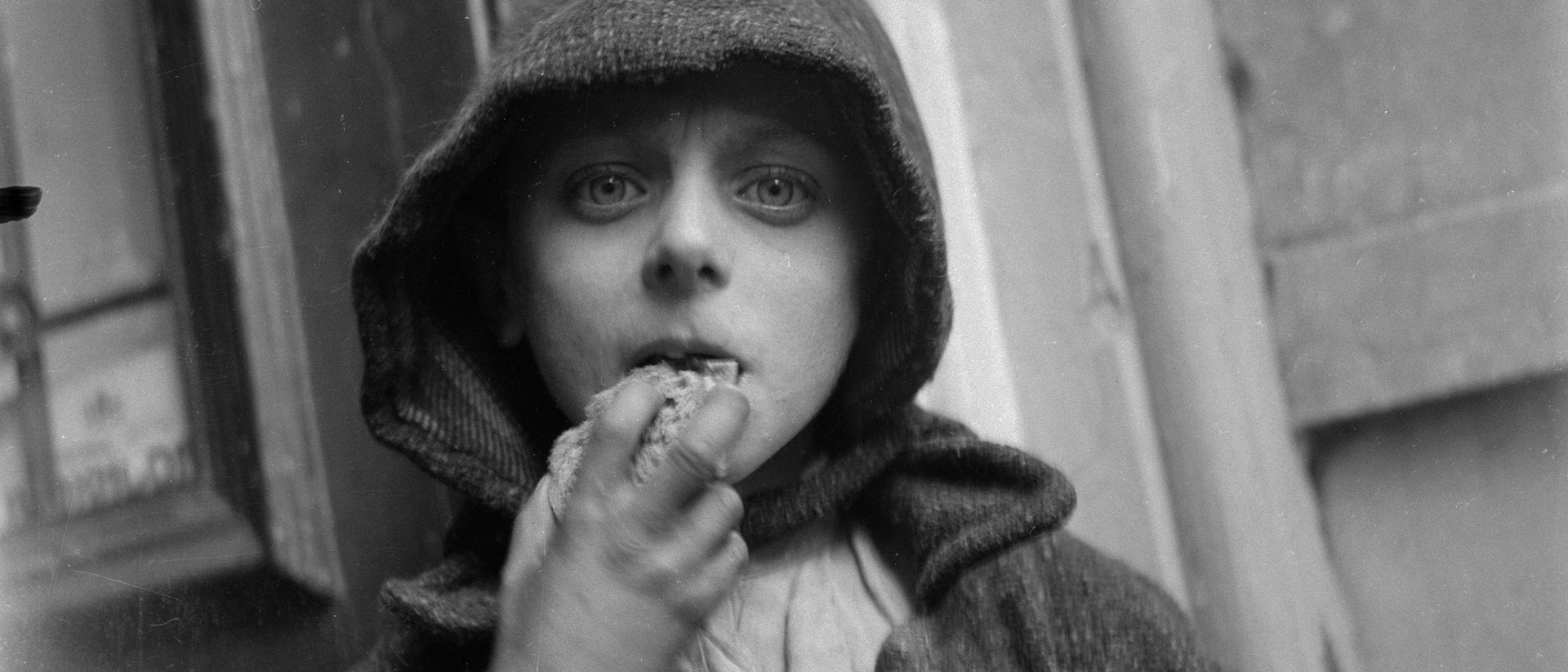 Dutch child during the Hungerwinter (Famine)The Dutch famine of 1944–45, known in the Netherlands as the Hongerwinter (literal translation: hunger winter), was a famine that took place in the German-occupied Netherlands, especially in the densely populated western provinces north of the great rivers, during the winter of 1944–45, near the end of World War II. Dutch child during the Hungerwinter (Famine)The Dutch famine of 1944–45, known in the Netherlands as the Hongerwinter (literal translation: hunger winter), was a famine that took place in the German-occupied Netherlands, especially in the densely populated western provinces north of the great rivers, during the winter of 1944–45, near the end of World War II.
A German blockade cut off food and fuel shipments from farm towns. Some 4.5 million were affected and survived thanks to soup kitchens. Loe de Jong (1914–2005), author of The Kingdom of the Netherlands During World War II, estimated at least 22,000 deaths occurred due to the famine. Another author estimated 18,000 deaths from the famine. Most of the victims were reportedly elderly men.
The famine was alleviated by the liberation of the provinces by the Allies in May 1945. Prior to that, bread baked from flour shipped in from Sweden, and the airlift of food by the Royal Air Force, the Royal Canadian Air Force, and the United States Army Air Forces – under an agreement with the Germans that if the Germans did not shoot at the mercy flights, the Allies would not bomb the German positions – helped to mitigate the famine. These were Operations Manna and Chowhound. Operation Faust also trucked in food to the province.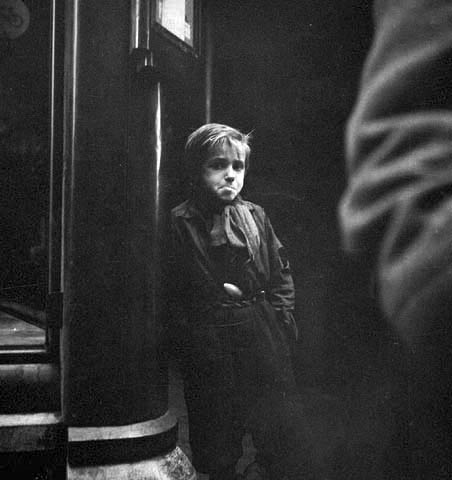 The face of Hunger. A Dutch boy, outside a black market restaurant, looks for a food handout. He's tucked a spoon into his belt in the event. Amsterdam, Netherlands. Dutch photographer Kryn Taconis would have to record his photos secretly. (Photographer: Kryn Taconis; Library and Archives Canada a169941) The face of Hunger. A Dutch boy, outside a black market restaurant, looks for a food handout. He's tucked a spoon into his belt in the event. Amsterdam, Netherlands. Dutch photographer Kryn Taconis would have to record his photos secretly. (Photographer: Kryn Taconis; Library and Archives Canada a169941) 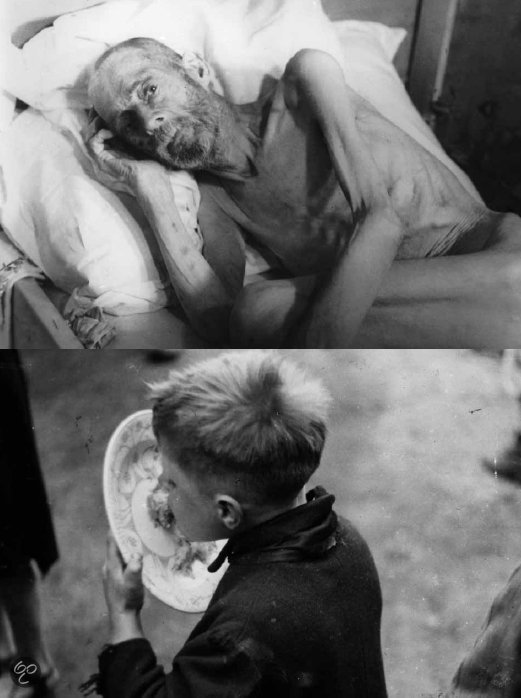 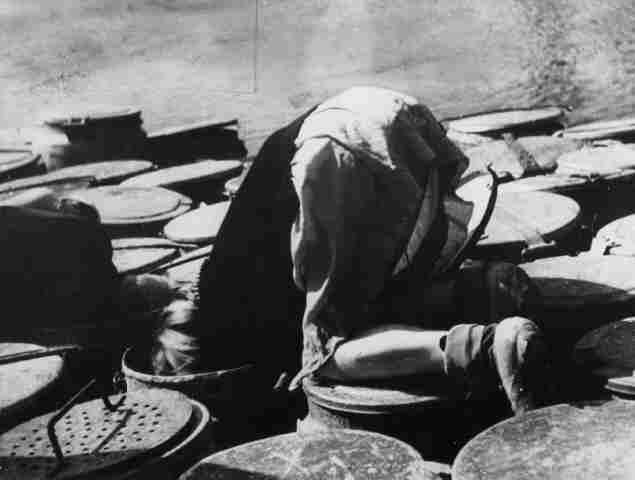   Amsterdam during the Dutch Famine 1944-1945 Amsterdam during the Dutch Famine 1944-1945 January 1944, 'Hunger Winter' in Amsterdam. With no food and no coal to burn in their stoves people are removing wood blocks from the tram tracks. January 1944, 'Hunger Winter' in Amsterdam. With no food and no coal to burn in their stoves people are removing wood blocks from the tram tracks. A dead Dutch baby during the Dutch Famine of 1944-1945 A dead Dutch baby during the Dutch Famine of 1944-1945  Dead corpses and bodies lying in a room during the Dutch Famine of the winter of 1944-1945 Dead corpses and bodies lying in a room during the Dutch Famine of the winter of 1944-1945 Dead corpses and bodies lying in a room during the Dutch Famine of the winter of 1944-1945 Dead corpses and bodies lying in a room during the Dutch Famine of the winter of 1944-1945 A dead Dutch baby during the Dutch Famine of 1944-1945 A dead Dutch baby during the Dutch Famine of 1944-1945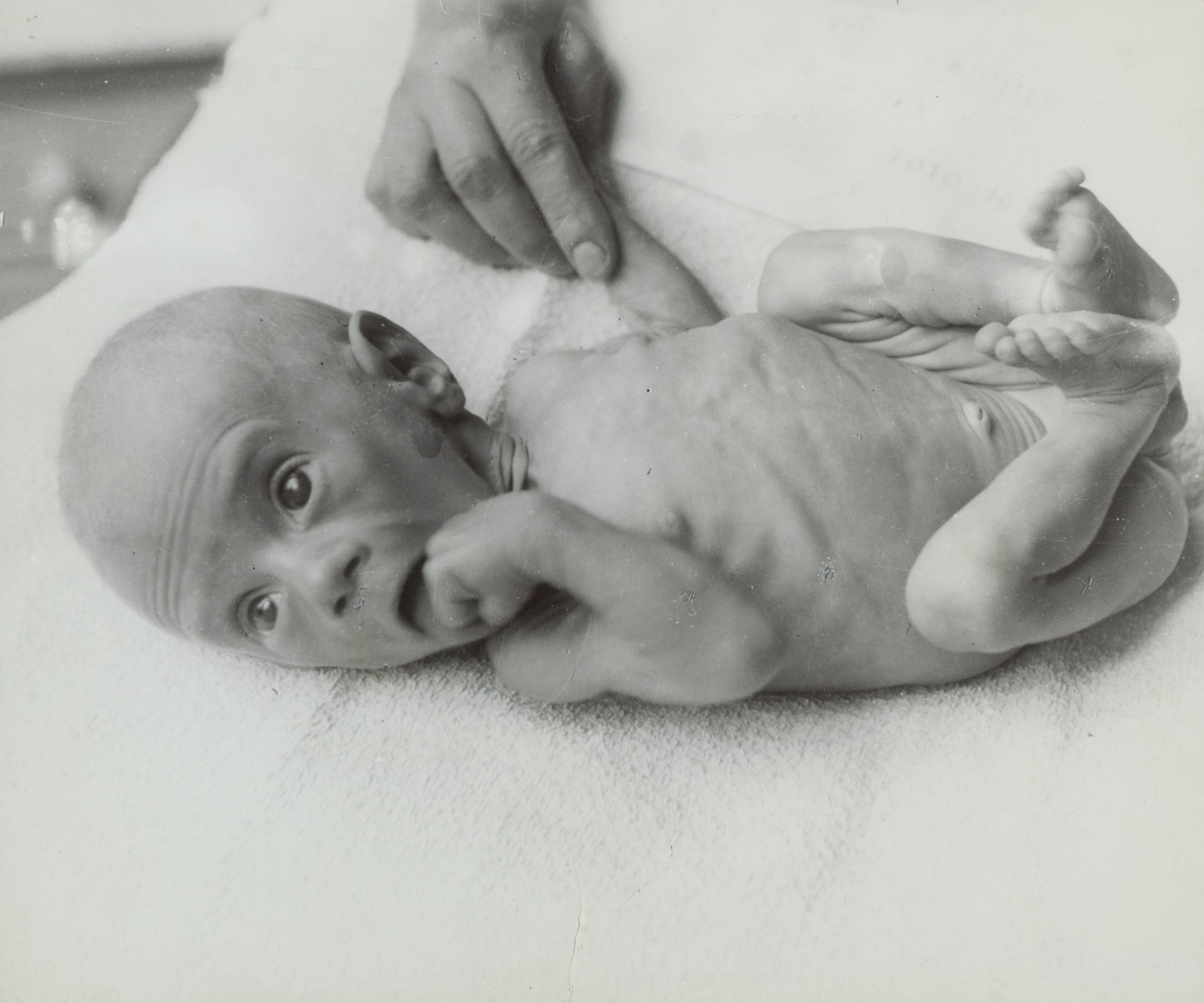  1944 - 1945 Hunger winter in Amsterdam. More than 20,000 people lost their lives in Amsterdam and the western part of the Netherland during the winter of 1944-1945. 1944 - 1945 Hunger winter in Amsterdam. More than 20,000 people lost their lives in Amsterdam and the western part of the Netherland during the winter of 1944-1945.  Soup in a soup kitchen when food was available. For many this soup in the soup kitchens came too late. 20 to 22 thousand people died in the larger Western Dutch cities and towns in the Holland region. Soup in a soup kitchen when food was available. For many this soup in the soup kitchens came too late. 20 to 22 thousand people died in the larger Western Dutch cities and towns in the Holland region. A Dutch woman who survived the "Hongerwinter", the Hungry Winter of 1944-45 in which the occupied Netherlands was denied any food or fuel by the Germans as punishment for supporting the Allies. A Dutch woman who survived the "Hongerwinter", the Hungry Winter of 1944-45 in which the occupied Netherlands was denied any food or fuel by the Germans as punishment for supporting the Allies.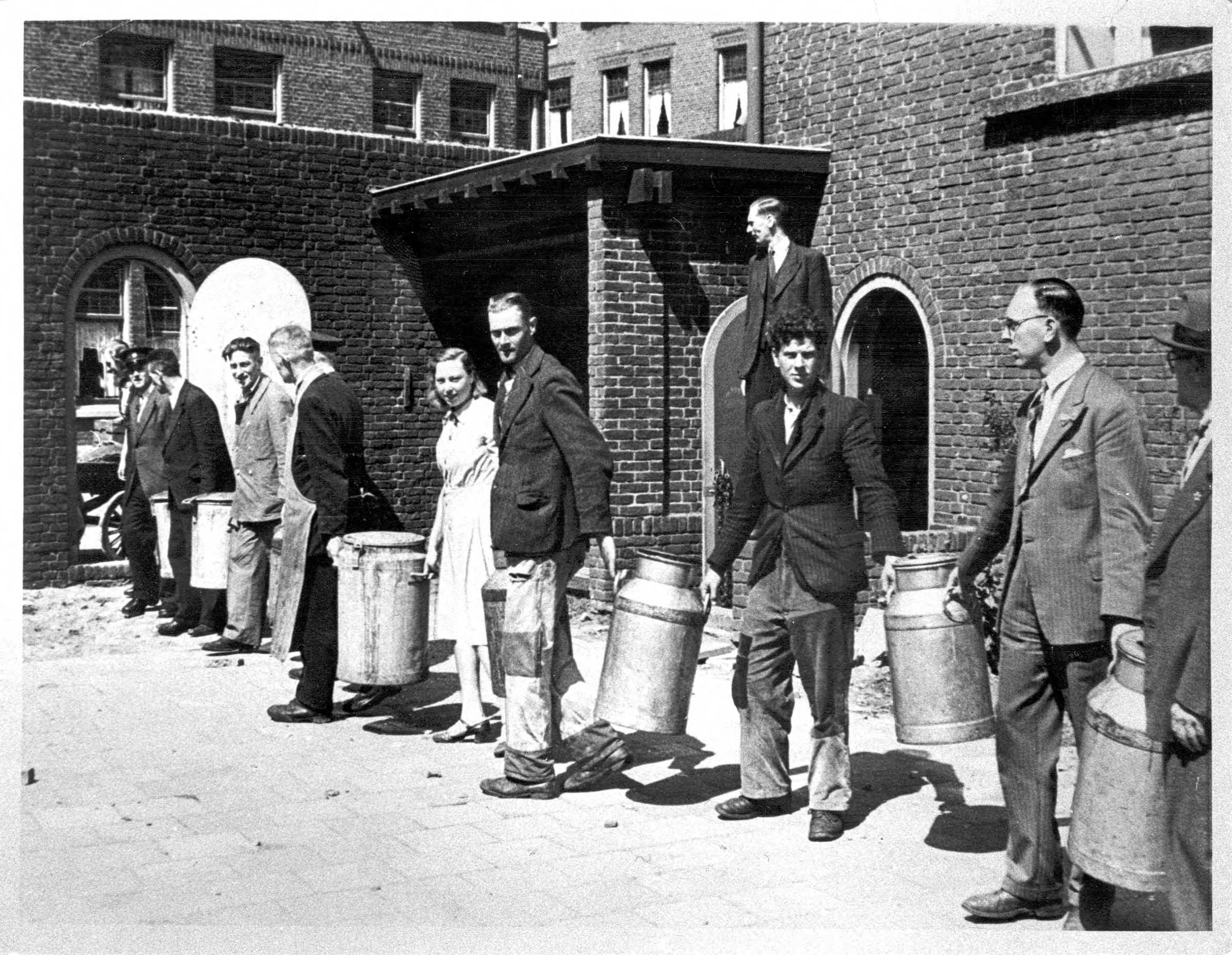 Food supply in Wageningen, WWII Food supply in Wageningen, WWII Cas Oorthuys – child with a Stock pot during the Dutch Famine, Amsterdam (1944-1945) Cas Oorthuys – child with a Stock pot during the Dutch Famine, Amsterdam (1944-1945) 1944 - 1945. Portret of a starving woman eating a piece of bread during the hongerwinter in Amsterdam. The hongerwinter started on September 17, 1944 when rail workers went on strike to stop the Nazi-occupier, who then punished them by putting a hold on all maritime transport. This cut off all food and fuel delivery to the west and north of the Netherlands. More than 20,000 people lost their lives during the winter of 1944-1945. Photo Cas Oorthuys. 1944 - 1945. Portret of a starving woman eating a piece of bread during the hongerwinter in Amsterdam. The hongerwinter started on September 17, 1944 when rail workers went on strike to stop the Nazi-occupier, who then punished them by putting a hold on all maritime transport. This cut off all food and fuel delivery to the west and north of the Netherlands. More than 20,000 people lost their lives during the winter of 1944-1945. Photo Cas Oorthuys.  1944 - 1945. Man pushes a cart loaded with food over a bridge in Amsterdam. The hongerwinter started on September 17, 1944 when rail workers went on strike to stop the Nazi-occupier, who then punished them by putting a hold on all maritime transport. This cut off all food and fuel delivery to the west and north of the Netherlands. More than 20,000 people lost their lives during the winter of 1944-1945. Photo Nederlands Fotomuseum / Cas Oorthuys. 1944 - 1945. Man pushes a cart loaded with food over a bridge in Amsterdam. The hongerwinter started on September 17, 1944 when rail workers went on strike to stop the Nazi-occupier, who then punished them by putting a hold on all maritime transport. This cut off all food and fuel delivery to the west and north of the Netherlands. More than 20,000 people lost their lives during the winter of 1944-1945. Photo Nederlands Fotomuseum / Cas Oorthuys.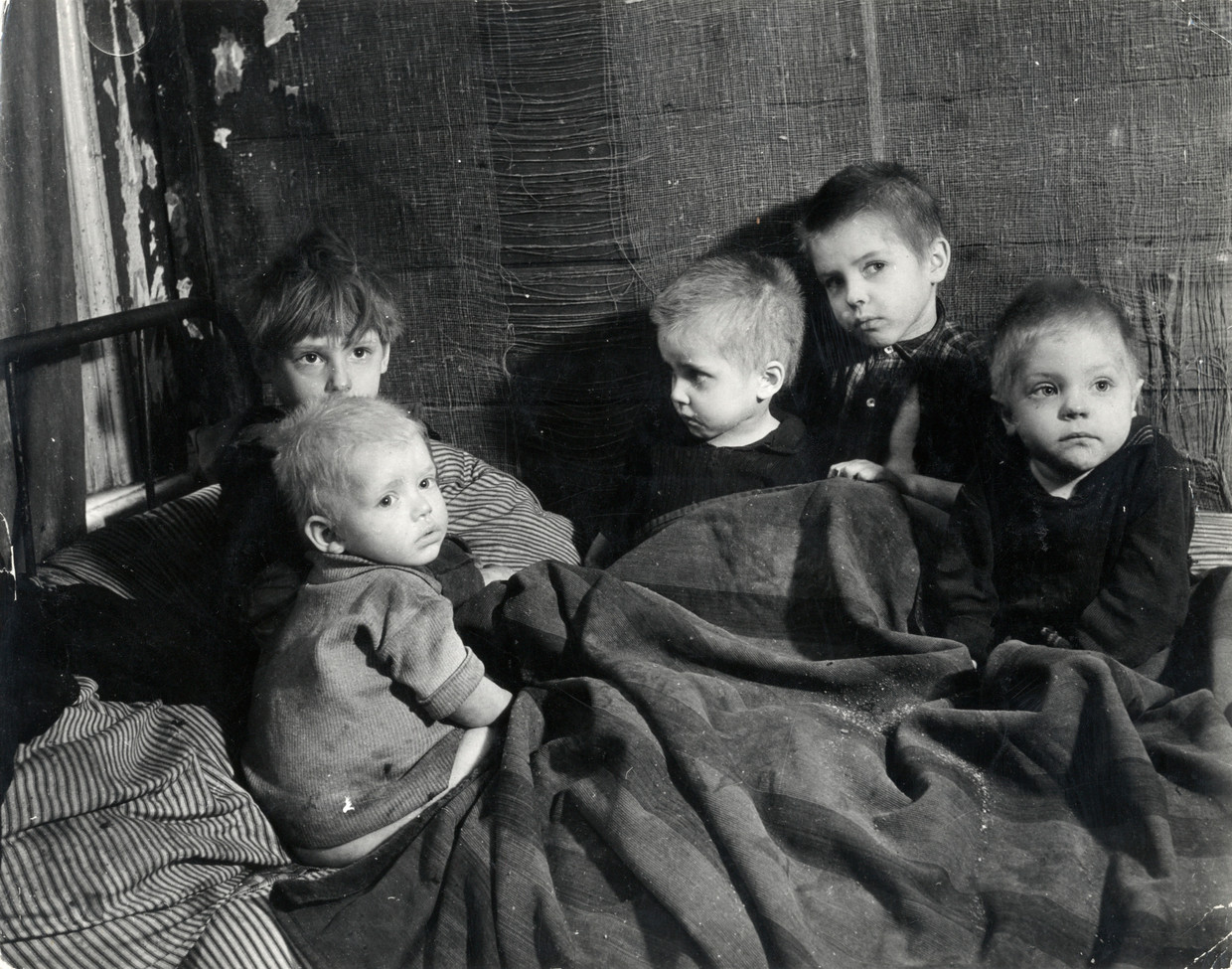 Children in the Amsterdam neighbourhood Kattenburg (Cats Borough) during the Dutch Famine of 1944-1945 Children in the Amsterdam neighbourhood Kattenburg (Cats Borough) during the Dutch Famine of 1944-1945 1944 - 1945. Children on the way to a soup kitchen in Amsterdam. There were 40,000 malnourished children in the big cities during the Hunger Winter who fled to farming-communities were there was still food. More than 20,000 people lost their lives in Amsterdam and the western part of the Netherland during the winter of 1944-1945. 1944 - 1945. Children on the way to a soup kitchen in Amsterdam. There were 40,000 malnourished children in the big cities during the Hunger Winter who fled to farming-communities were there was still food. More than 20,000 people lost their lives in Amsterdam and the western part of the Netherland during the winter of 1944-1945.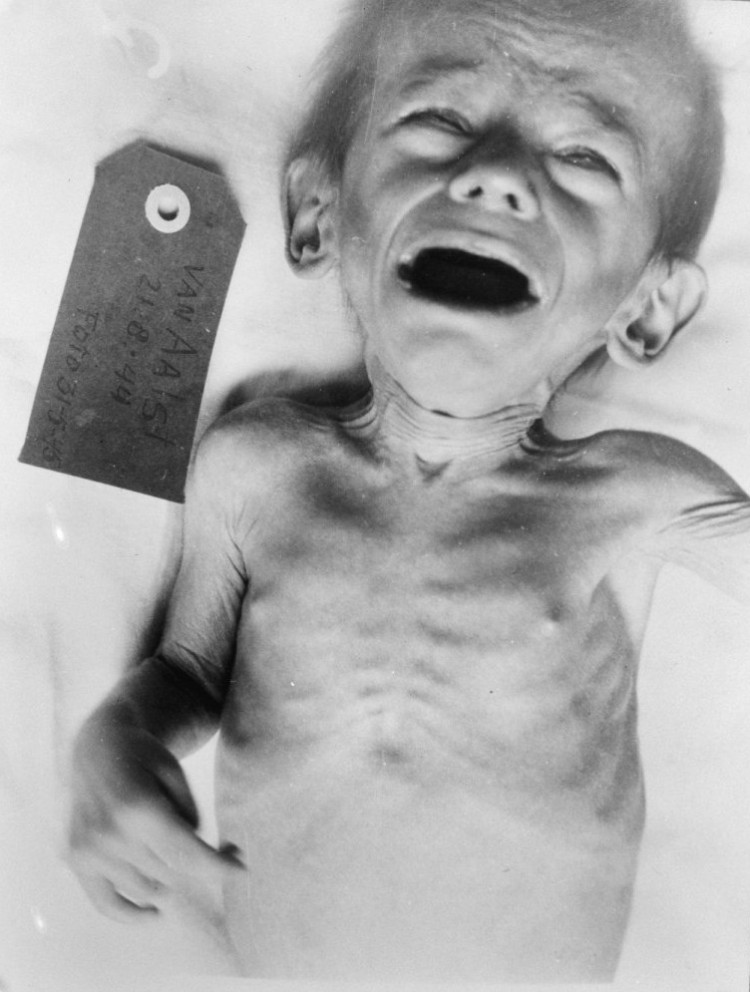 A child in the Netherlands in 1944/45 during the Dutch famine A child in the Netherlands in 1944/45 during the Dutch famine Dutch children on the street in the Hague during the Dutch famine of 1944-1945 (the Hungerwinter). That famine lasted to long and 20 thousand people died of hunger and cold. Dutch children on the street in the Hague during the Dutch famine of 1944-1945 (the Hungerwinter). That famine lasted to long and 20 thousand people died of hunger and cold.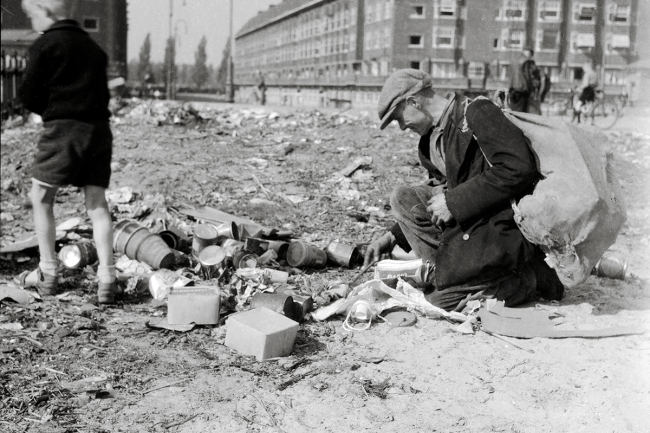 During the 1944-45 "Hunger Winter," a man searches for fuel and food at an illegal rubbish dump in Amsterdam-Zuid. (Credit: Cas Oorthuys/Nederlands Fotomuseum) During the 1944-45 "Hunger Winter," a man searches for fuel and food at an illegal rubbish dump in Amsterdam-Zuid. (Credit: Cas Oorthuys/Nederlands Fotomuseum) A Dutch woman during the Hungerwinter in Amsterdam (1944-1945) A Dutch woman during the Hungerwinter in Amsterdam (1944-1945) A victim of starvation during the Dutch famine of 1944-45. Women pregnant during the period gave birth to babies who were affected by health problems throughout their lives.Credit...Hulton Archive/Getty Images A victim of starvation during the Dutch famine of 1944-45. Women pregnant during the period gave birth to babies who were affected by health problems throughout their lives.Credit...Hulton Archive/Getty Images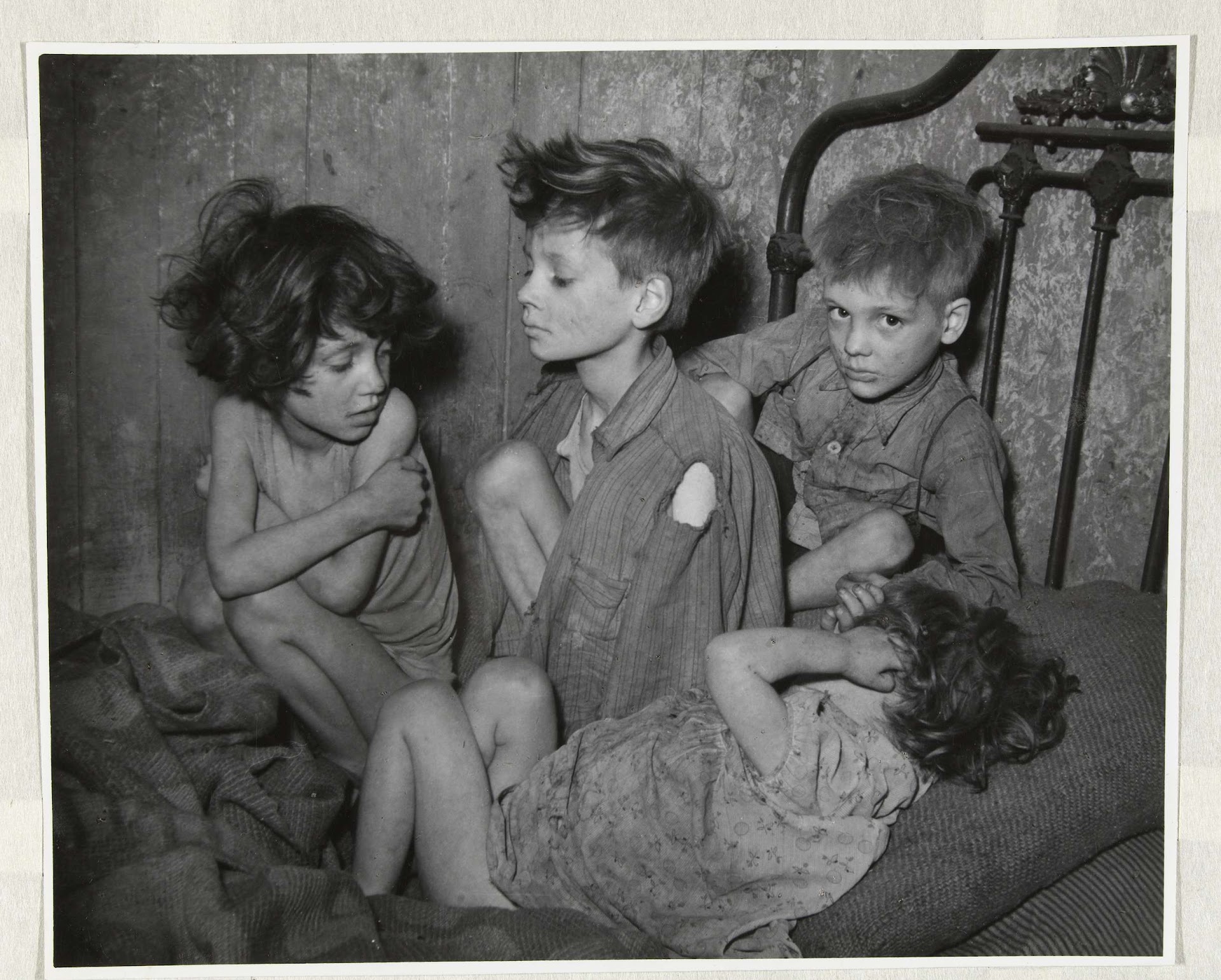 Dutch children during the Hunger winter in the Western Netherlands Dutch children during the Hunger winter in the Western Netherlands Cas Oorthuys. Portrait of starving woman in the hunger winter, Amsterdam 1944-1945 Cas Oorthuys. Portrait of starving woman in the hunger winter, Amsterdam 1944-1945 The Dutch people suffered under a enemy occupation (May 1940-May 1945) for much of the Second World War. During the winter of 1944-1945 food and fuel supplies grew increasingly scarce. Many people starved or perished from the cold during what came to be known as the “Hunger Winter.” A Dutch family in Amsterdam during the Hunger winter of 1944-1945. The worried face expression in the face of the mother says everything. Photo: Library and Archives Canada. The Dutch people suffered under a enemy occupation (May 1940-May 1945) for much of the Second World War. During the winter of 1944-1945 food and fuel supplies grew increasingly scarce. Many people starved or perished from the cold during what came to be known as the “Hunger Winter.” A Dutch family in Amsterdam during the Hunger winter of 1944-1945. The worried face expression in the face of the mother says everything. Photo: Library and Archives Canada. 9-year-old boy from Amsterdam during the dutch famine known as "hunger winter" 1944–45. Many children carried spoons with them wherever they went “just in case.” 9-year-old boy from Amsterdam during the dutch famine known as "hunger winter" 1944–45. Many children carried spoons with them wherever they went “just in case.” Malnourished Dutch child in The Hague Malnourished Dutch child in The Hague Friendship during the Dutch Hunger Winter of 1944/45 Friendship during the Dutch Hunger Winter of 1944/45 City dwellers went on hunger expeditions to the countryside. They traded their valuables with the farmers for food. More than 20,000 people died of starvation. City dwellers went on hunger expeditions to the countryside. They traded their valuables with the farmers for food. More than 20,000 people died of starvation. Mother and child during the Dutch Famine of 1944-1945 Mother and child during the Dutch Famine of 1944-1945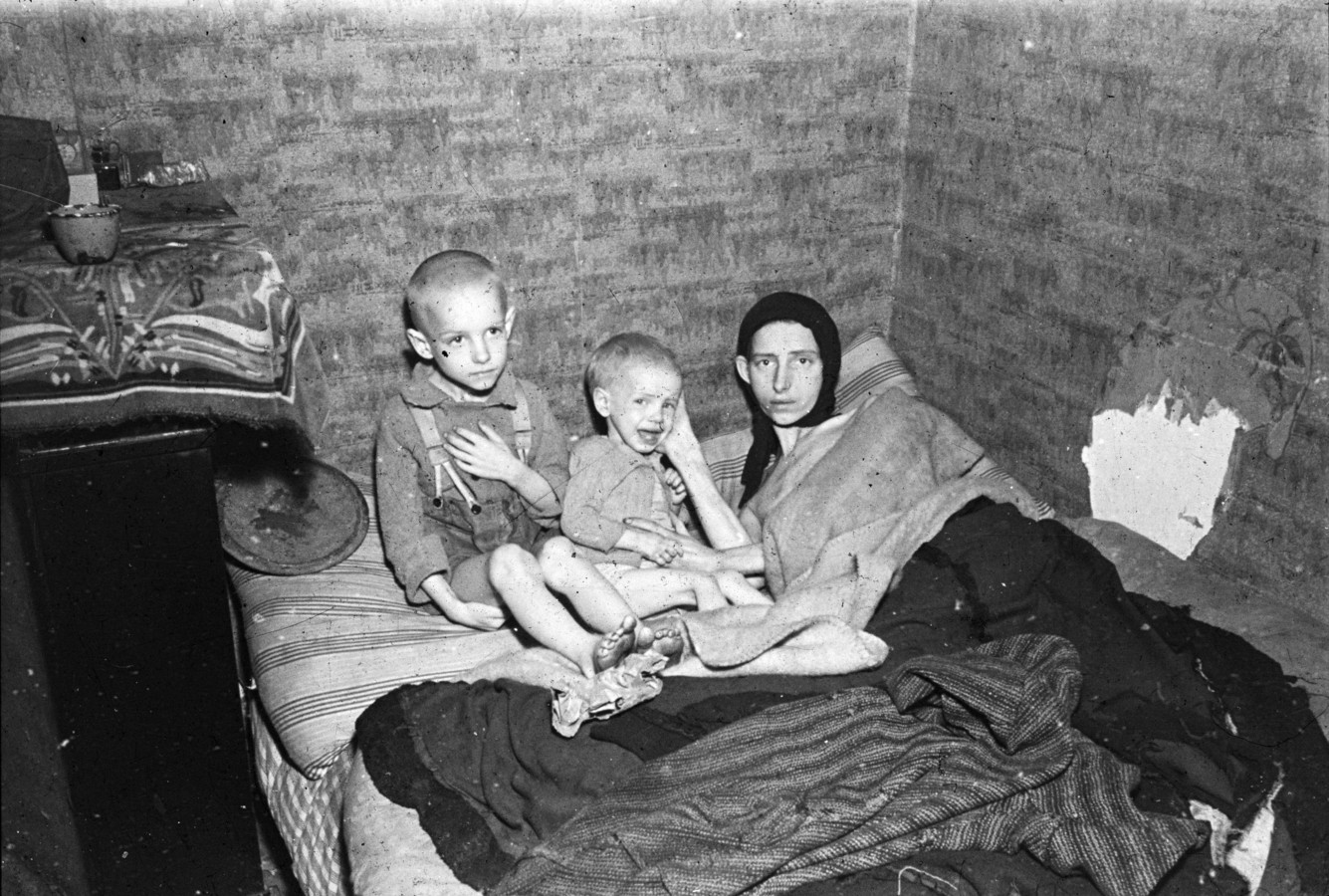 Demoralised starving Dutch mother and her children in the Hague during the Famine of the winter of 1944-1945 Demoralised starving Dutch mother and her children in the Hague during the Famine of the winter of 1944-1945  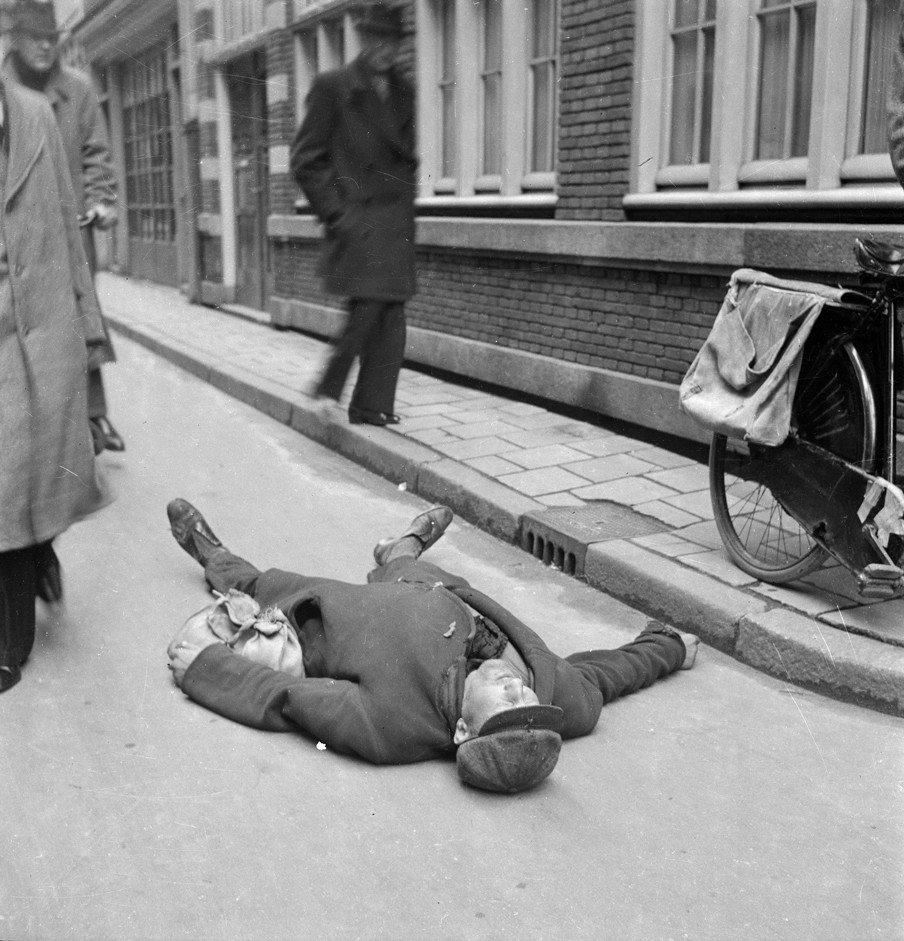 Dead man on the street in Amsterdam during the Hungerwinter of 1944-1945 Dead man on the street in Amsterdam during the Hungerwinter of 1944-1945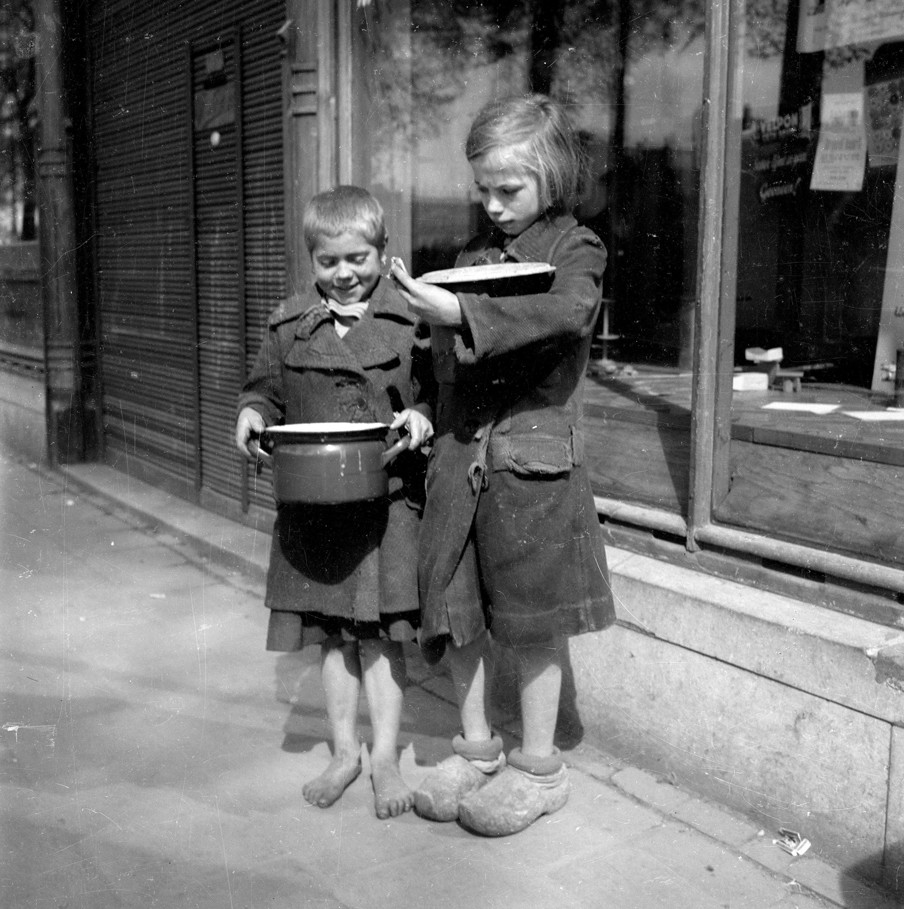 Children on the street in Amsterdam during the Dutch famine of 1944–45 (Hunger Winter) Children on the street in Amsterdam during the Dutch famine of 1944–45 (Hunger Winter)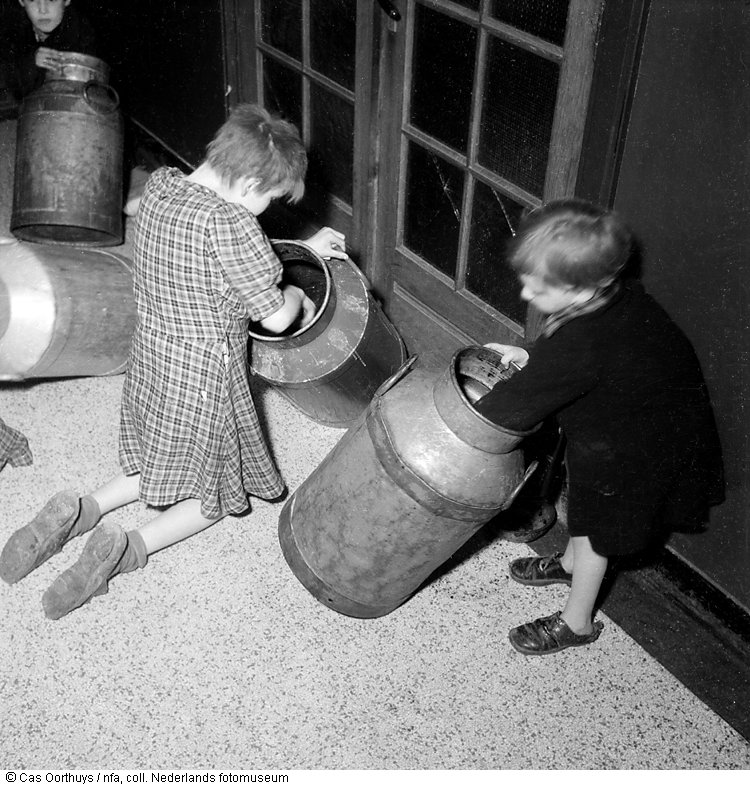  Children collect wood from Amsterdam tram rails ties to use as fuel during the Hunger winter of 1944-1945 Children collect wood from Amsterdam tram rails ties to use as fuel during the Hunger winter of 1944-1945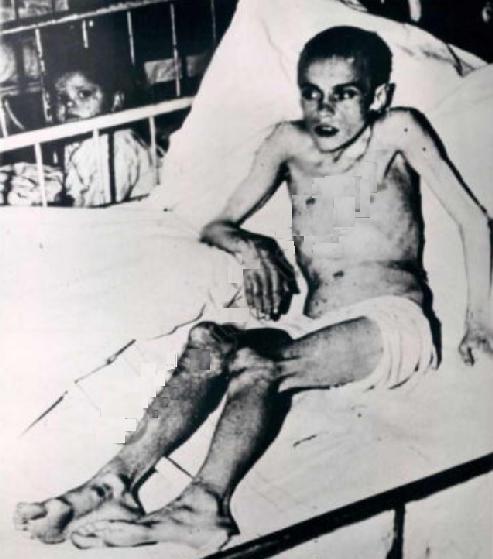  Portrait of a scarce clad boy for a door on the street in the hunger winter, Amsterdam (1944-1945) Portrait of a scarce clad boy for a door on the street in the hunger winter, Amsterdam (1944-1945) Victim of hunger winter lies on a bed in a house, Amsterdam (1944-1945) Victim of hunger winter lies on a bed in a house, Amsterdam (1944-1945) Hungry and cold children. Amsterdam-South (1944-1945) Hungry and cold children. Amsterdam-South (1944-1945) Dutch mother with her children during the Hungerwinter (Famine) of 1944-1945 Dutch mother with her children during the Hungerwinter (Famine) of 1944-1945 Two Dutch women on hunger food search during the Hunger Winter 1944-1945 Two Dutch women on hunger food search during the Hunger Winter 1944-1945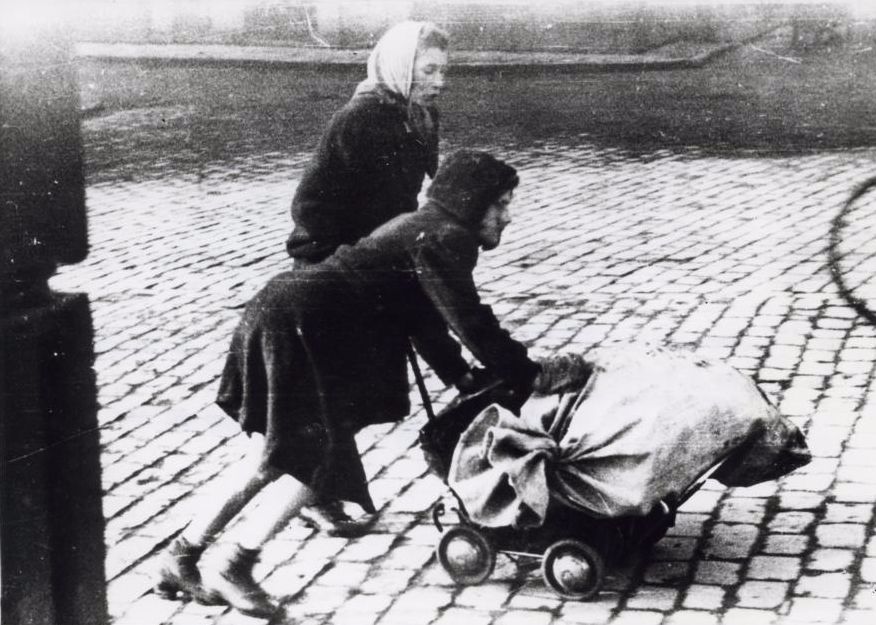 Dutch women on their hunger food search during the Hunger Winter 1944-1945 Dutch women on their hunger food search during the Hunger Winter 1944-1945 Young Dutch boy during the Hungerwinter 1944-1945 Young Dutch boy during the Hungerwinter 1944-1945 Three Dutch children during the Hunger winter of 1944-1945Hungry winter children are often overweight, more likely to have diabetes and high cholesterol, and are more likely to suffer from schizophrenia than siblings born earlier or later. That was already known, now it is becoming clear why: due to changes in the DNA of the unborn fruit, already in the very beginning of pregnancy. Three Dutch children during the Hunger winter of 1944-1945Hungry winter children are often overweight, more likely to have diabetes and high cholesterol, and are more likely to suffer from schizophrenia than siblings born earlier or later. That was already known, now it is becoming clear why: due to changes in the DNA of the unborn fruit, already in the very beginning of pregnancy. May 1945. Exhausted man on a canal bridge in Amsterdam. Photo NFA Collectie Nederlands Fotomuseum / Cas Oorthuys.www.nytimes.com/2018/01/31/science/dutch-famine-genes.html May 1945. Exhausted man on a canal bridge in Amsterdam. Photo NFA Collectie Nederlands Fotomuseum / Cas Oorthuys.www.nytimes.com/2018/01/31/science/dutch-famine-genes.html
dutchreview.com/culture/the-hunger-winter-the-dutch-famine-of-1944-45/ The 2 most powerful men in Nazi occupied Netherlands, the Austrians Reichskommissar of the occupied Netherlands Arthur Seyss-Inquart (left) and the highest SS and Police Leader in the occupied Netherlands and therefore the leading security and police officer there during the period of 1940–1945, SS-Obergruppenführer Hanns Albin RauterCheers, The 2 most powerful men in Nazi occupied Netherlands, the Austrians Reichskommissar of the occupied Netherlands Arthur Seyss-Inquart (left) and the highest SS and Police Leader in the occupied Netherlands and therefore the leading security and police officer there during the period of 1940–1945, SS-Obergruppenführer Hanns Albin RauterCheers,
Pieter
|
|
|
|
Post by pieter on Apr 18, 2020 10:58:14 GMT -7
|
|
|
|
Post by pieter on Apr 18, 2020 11:10:44 GMT -7
|
|
|
|
Post by pieter on Apr 18, 2020 11:20:31 GMT -7
|
|
|
|
Post by pieter on Apr 18, 2020 12:11:45 GMT -7
|
|
|
|
Post by pieter on Apr 18, 2020 12:23:11 GMT -7
What if Anne Frank had a camera. The Dutch 14 year old actress Luna plays Anne Frank with a Camera. This is an Anne Frank House production.
Put on English subtitles
|
|
|
|
Post by pieter on Apr 18, 2020 12:57:56 GMT -7
Luna Cruz Perez The role of Anne Frank is played by the 14 year old Dutch actress Luna Cruz Perez. Luna was born in Zaandam in 2006 and now lives in Uithoorn. Luna is in the second grade of high school. Luna is sweet, caring and always cheerful. In her free time, she likes to do fun things with her friends, such as Netflix on the couch. Luna also loves her rabbit, with whom she plays a lot. Luna has previously played a small role in a Dutch police series. The role of Anne Frank is the first major role she can play as a starting actress. The role of Anne Frank is perfect for her, because Luna and Anne are similar in character. They are both cheerful and energetic people, which made it easy for Luna to take on the role of Anne Frank. The only difference is that Anne Frank was a Dutch Ashkenazi Jewish girl, with a German Jewish background and Luna is a Sephardic Jewish girl (with centuries ago Portuguese ancestors, that is her Iberian Peninsula sounding name). Luna's goal is to play in even more films and series in the future. The role of Anne Frank is played by the 14 year old Dutch actress Luna Cruz Perez. Luna was born in Zaandam in 2006 and now lives in Uithoorn. Luna is in the second grade of high school. Luna is sweet, caring and always cheerful. In her free time, she likes to do fun things with her friends, such as Netflix on the couch. Luna also loves her rabbit, with whom she plays a lot. Luna has previously played a small role in a Dutch police series. The role of Anne Frank is the first major role she can play as a starting actress. The role of Anne Frank is perfect for her, because Luna and Anne are similar in character. They are both cheerful and energetic people, which made it easy for Luna to take on the role of Anne Frank. The only difference is that Anne Frank was a Dutch Ashkenazi Jewish girl, with a German Jewish background and Luna is a Sephardic Jewish girl (with centuries ago Portuguese ancestors, that is her Iberian Peninsula sounding name). Luna's goal is to play in even more films and series in the future.
|
|
|
|
Post by pieter on Apr 18, 2020 13:08:36 GMT -7
|
|
|
|
Post by pieter on Apr 18, 2020 13:11:50 GMT -7
|
|
|
|
Post by pieter on Apr 18, 2020 13:17:12 GMT -7
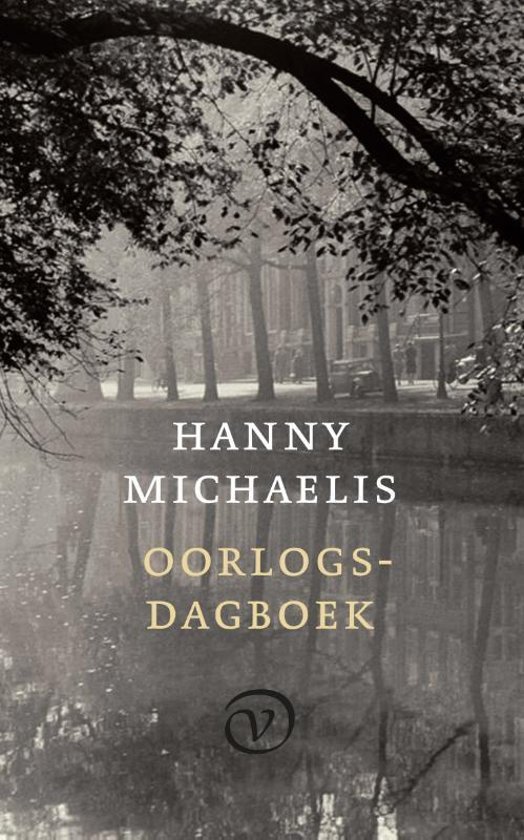 Hanny Michaelis war diary Hanny Michaelis war diary
Hanny Michaelis (1922–2007) was born in Amsterdam. In 1941 she did her final exams at the Vossius Gymnasium, shortly afterwards she and her parents had to go into hiding. They did that at different addresses and never saw each other again. Her parents were arrested in 1943 and taken to Sobibor via camp Westerbork, where they were almost certainly murdered immediately upon arrival. Michaelis returned to Amsterdam shortly after the liberation, where she has lived ever since.
Michaelis married the writer Gerard Reve in 1948. Reve belonged to the Big Three of Dutch liiterature after the Second World War, Willem Frederik Hermans (1921 – 1995) , Harry Mulisch (1927 – 2010) and Gerard Reve (1923 – 2006). The couple broke up ten years later, when it turned out that Reve was no longer able to end his homosexuality. However, they remained good friends.
Michaelis worked for many years at the art affairs department of the city of Amsterdam and also published six collections of poems. She made her debut in 1949 at publisher Meulenhoff with Klein foreplay. This was followed by the bundles Water from the Rock (1957), Against the Wind (1962), Unforeseen (1966), The Rock of Gibraltar (1969) and Wegdraven to a New Utopia (1971). In 1985 she contributed to the collection of Poems by her publisher Geert van Oorschot, in which works by Elisabeth Eybers, Fritzi Harmsen van Beek, Judith Herzberg, Annie M.G. Schmidt and M. Vasalis was included. In 1989 she published a larger selection of her own work with The Weed of Doubt. All her poetry was compiled in Collected Poems (1996). In the autumn of 2011, a completely renewed and greatly expanded fifth edition of her Collected Poems was published, in which 30 new poems were included.
In 1995 she received the Anna Bijnsprijs and the Sjoerd Leikerprijs for her entire oeuvre. In the autumn of 2002 she published her childhood memories in the most distant past.
In 2005 a modest selection of her poetry was published by J.J. Voskuil |
|
|
|
Post by pieter on Apr 18, 2020 17:47:13 GMT -7
|
|
|
|
Post by pieter on Apr 18, 2020 18:04:17 GMT -7
|
|












/s3/static.nrc.nl/wp-content/uploads/2018/02/web_0702binmariniers_24678139.jpg)




















































































































